

How to Write an Essay
Use the links below to jump directly to any section of this guide:
Essay Writing Fundamentals
How to prepare to write an essay, how to edit an essay, how to share and publish your essays, how to get essay writing help, how to find essay writing inspiration, resources for teaching essay writing.
Essays, short prose compositions on a particular theme or topic, are the bread and butter of academic life. You write them in class, for homework, and on standardized tests to show what you know. Unlike other kinds of academic writing (like the research paper) and creative writing (like short stories and poems), essays allow you to develop your original thoughts on a prompt or question. Essays come in many varieties: they can be expository (fleshing out an idea or claim), descriptive, (explaining a person, place, or thing), narrative (relating a personal experience), or persuasive (attempting to win over a reader). This guide is a collection of dozens of links about academic essay writing that we have researched, categorized, and annotated in order to help you improve your essay writing.
Essays are different from other forms of writing; in turn, there are different kinds of essays. This section contains general resources for getting to know the essay and its variants. These resources introduce and define the essay as a genre, and will teach you what to expect from essay-based assessments.
Purdue OWL Online Writing Lab
One of the most trusted academic writing sites, Purdue OWL provides a concise introduction to the four most common types of academic essays.
"The Essay: History and Definition" (ThoughtCo)
This snappy article from ThoughtCo talks about the origins of the essay and different kinds of essays you might be asked to write.
"What Is An Essay?" Video Lecture (Coursera)
The University of California at Irvine's free video lecture, available on Coursera, tells you everything you need to know about the essay.
Wikipedia Article on the "Essay"
Wikipedia's article on the essay is comprehensive, providing both English-language and global perspectives on the essay form. Learn about the essay's history, forms, and styles.
"Understanding College and Academic Writing" (Aims Online Writing Lab)
This list of common academic writing assignments (including types of essay prompts) will help you know what to expect from essay-based assessments.
Before you start writing your essay, you need to figure out who you're writing for (audience), what you're writing about (topic/theme), and what you're going to say (argument and thesis). This section contains links to handouts, chapters, videos and more to help you prepare to write an essay.
How to Identify Your Audience
"Audience" (Univ. of North Carolina Writing Center)
This handout provides questions you can ask yourself to determine the audience for an academic writing assignment. It also suggests strategies for fitting your paper to your intended audience.
"Purpose, Audience, Tone, and Content" (Univ. of Minnesota Libraries)
This extensive book chapter from Writing for Success , available online through Minnesota Libraries Publishing, is followed by exercises to try out your new pre-writing skills.
"Determining Audience" (Aims Online Writing Lab)
This guide from a community college's writing center shows you how to know your audience, and how to incorporate that knowledge in your thesis statement.
"Know Your Audience" ( Paper Rater Blog)
This short blog post uses examples to show how implied audiences for essays differ. It reminds you to think of your instructor as an observer, who will know only the information you pass along.
How to Choose a Theme or Topic
"Research Tutorial: Developing Your Topic" (YouTube)
Take a look at this short video tutorial from the University of North Carolina at Chapel Hill to understand the basics of developing a writing topic.
"How to Choose a Paper Topic" (WikiHow)
This simple, step-by-step guide (with pictures!) walks you through choosing a paper topic. It starts with a detailed description of brainstorming and ends with strategies to refine your broad topic.
"How to Read an Assignment: Moving From Assignment to Topic" (Harvard College Writing Center)
Did your teacher give you a prompt or other instructions? This guide helps you understand the relationship between an essay assignment and your essay's topic.
"Guidelines for Choosing a Topic" (CliffsNotes)
This study guide from CliffsNotes both discusses how to choose a topic and makes a useful distinction between "topic" and "thesis."
How to Come Up with an Argument
"Argument" (Univ. of North Carolina Writing Center)
Not sure what "argument" means in the context of academic writing? This page from the University of North Carolina is a good place to start.
"The Essay Guide: Finding an Argument" (Study Hub)
This handout explains why it's important to have an argument when beginning your essay, and provides tools to help you choose a viable argument.
"Writing a Thesis and Making an Argument" (University of Iowa)
This page from the University of Iowa's Writing Center contains exercises through which you can develop and refine your argument and thesis statement.
"Developing a Thesis" (Harvard College Writing Center)
This page from Harvard's Writing Center collates some helpful dos and don'ts of argumentative writing, from steps in constructing a thesis to avoiding vague and confrontational thesis statements.
"Suggestions for Developing Argumentative Essays" (Berkeley Student Learning Center)
This page offers concrete suggestions for each stage of the essay writing process, from topic selection to drafting and editing.
How to Outline your Essay
"Outlines" (Univ. of North Carolina at Chapel Hill via YouTube)
This short video tutorial from the University of North Carolina at Chapel Hill shows how to group your ideas into paragraphs or sections to begin the outlining process.
"Essay Outline" (Univ. of Washington Tacoma)
This two-page handout by a university professor simply defines the parts of an essay and then organizes them into an example outline.
"Types of Outlines and Samples" (Purdue OWL Online Writing Lab)
Purdue OWL gives examples of diverse outline strategies on this page, including the alphanumeric, full sentence, and decimal styles.
"Outlining" (Harvard College Writing Center)
Once you have an argument, according to this handout, there are only three steps in the outline process: generalizing, ordering, and putting it all together. Then you're ready to write!
"Writing Essays" (Plymouth Univ.)
This packet, part of Plymouth University's Learning Development series, contains descriptions and diagrams relating to the outlining process.
"How to Write A Good Argumentative Essay: Logical Structure" (Criticalthinkingtutorials.com via YouTube)
This longer video tutorial gives an overview of how to structure your essay in order to support your argument or thesis. It is part of a longer course on academic writing hosted on Udemy.
Now that you've chosen and refined your topic and created an outline, use these resources to complete the writing process. Most essays contain introductions (which articulate your thesis statement), body paragraphs, and conclusions. Transitions facilitate the flow from one paragraph to the next so that support for your thesis builds throughout the essay. Sources and citations show where you got the evidence to support your thesis, which ensures that you avoid plagiarism.
How to Write an Introduction
"Introductions" (Univ. of North Carolina Writing Center)
This page identifies the role of the introduction in any successful paper, suggests strategies for writing introductions, and warns against less effective introductions.
"How to Write A Good Introduction" (Michigan State Writing Center)
Beginning with the most common missteps in writing introductions, this guide condenses the essentials of introduction composition into seven points.
"The Introductory Paragraph" (ThoughtCo)
This blog post from academic advisor and college enrollment counselor Grace Fleming focuses on ways to grab your reader's attention at the beginning of your essay.
"Introductions and Conclusions" (Univ. of Toronto)
This guide from the University of Toronto gives advice that applies to writing both introductions and conclusions, including dos and don'ts.
"How to Write Better Essays: No One Does Introductions Properly" ( The Guardian )
This news article interviews UK professors on student essay writing; they point to introductions as the area that needs the most improvement.
How to Write a Thesis Statement
"Writing an Effective Thesis Statement" (YouTube)
This short, simple video tutorial from a college composition instructor at Tulsa Community College explains what a thesis statement is and what it does.
"Thesis Statement: Four Steps to a Great Essay" (YouTube)
This fantastic tutorial walks you through drafting a thesis, using an essay prompt on Nathaniel Hawthorne's The Scarlet Letter as an example.
"How to Write a Thesis Statement" (WikiHow)
This step-by-step guide (with pictures!) walks you through coming up with, writing, and editing a thesis statement. It invites you think of your statement as a "working thesis" that can change.
"How to Write a Thesis Statement" (Univ. of Indiana Bloomington)
Ask yourself the questions on this page, part of Indiana Bloomington's Writing Tutorial Services, when you're writing and refining your thesis statement.
"Writing Tips: Thesis Statements" (Univ. of Illinois Center for Writing Studies)
This page gives plentiful examples of good to great thesis statements, and offers questions to ask yourself when formulating a thesis statement.
How to Write Body Paragraphs
"Body Paragraph" (Brightstorm)
This module of a free online course introduces you to the components of a body paragraph. These include the topic sentence, information, evidence, and analysis.
"Strong Body Paragraphs" (Washington Univ.)
This handout from Washington's Writing and Research Center offers in-depth descriptions of the parts of a successful body paragraph.
"Guide to Paragraph Structure" (Deakin Univ.)
This handout is notable for color-coding example body paragraphs to help you identify the functions various sentences perform.
"Writing Body Paragraphs" (Univ. of Minnesota Libraries)
The exercises in this section of Writing for Success will help you practice writing good body paragraphs. It includes guidance on selecting primary support for your thesis.
"The Writing Process—Body Paragraphs" (Aims Online Writing Lab)
The information and exercises on this page will familiarize you with outlining and writing body paragraphs, and includes links to more information on topic sentences and transitions.
"The Five-Paragraph Essay" (ThoughtCo)
This blog post discusses body paragraphs in the context of one of the most common academic essay types in secondary schools.
How to Use Transitions
"Transitions" (Univ. of North Carolina Writing Center)
This page from the University of North Carolina at Chapel Hill explains what a transition is, and how to know if you need to improve your transitions.
"Using Transitions Effectively" (Washington Univ.)
This handout defines transitions, offers tips for using them, and contains a useful list of common transitional words and phrases grouped by function.
"Transitions" (Aims Online Writing Lab)
This page compares paragraphs without transitions to paragraphs with transitions, and in doing so shows how important these connective words and phrases are.
"Transitions in Academic Essays" (Scribbr)
This page lists four techniques that will help you make sure your reader follows your train of thought, including grouping similar information and using transition words.
"Transitions" (El Paso Community College)
This handout shows example transitions within paragraphs for context, and explains how transitions improve your essay's flow and voice.
"Make Your Paragraphs Flow to Improve Writing" (ThoughtCo)
This blog post, another from academic advisor and college enrollment counselor Grace Fleming, talks about transitions and other strategies to improve your essay's overall flow.
"Transition Words" (smartwords.org)
This handy word bank will help you find transition words when you're feeling stuck. It's grouped by the transition's function, whether that is to show agreement, opposition, condition, or consequence.
How to Write a Conclusion
"Parts of An Essay: Conclusions" (Brightstorm)
This module of a free online course explains how to conclude an academic essay. It suggests thinking about the "3Rs": return to hook, restate your thesis, and relate to the reader.
"Essay Conclusions" (Univ. of Maryland University College)
This overview of the academic essay conclusion contains helpful examples and links to further resources for writing good conclusions.
"How to End An Essay" (WikiHow)
This step-by-step guide (with pictures!) by an English Ph.D. walks you through writing a conclusion, from brainstorming to ending with a flourish.
"Ending the Essay: Conclusions" (Harvard College Writing Center)
This page collates useful strategies for writing an effective conclusion, and reminds you to "close the discussion without closing it off" to further conversation.
How to Include Sources and Citations
"Research and Citation Resources" (Purdue OWL Online Writing Lab)
Purdue OWL streamlines information about the three most common referencing styles (MLA, Chicago, and APA) and provides examples of how to cite different resources in each system.
EasyBib: Free Bibliography Generator
This online tool allows you to input information about your source and automatically generate citations in any style. Be sure to select your resource type before clicking the "cite it" button.
CitationMachine
Like EasyBib, this online tool allows you to input information about your source and automatically generate citations in any style.
Modern Language Association Handbook (MLA)
Here, you'll find the definitive and up-to-date record of MLA referencing rules. Order through the link above, or check to see if your library has a copy.
Chicago Manual of Style
Here, you'll find the definitive and up-to-date record of Chicago referencing rules. You can take a look at the table of contents, then choose to subscribe or start a free trial.
How to Avoid Plagiarism
"What is Plagiarism?" (plagiarism.org)
This nonprofit website contains numerous resources for identifying and avoiding plagiarism, and reminds you that even common activities like copying images from another website to your own site may constitute plagiarism.
"Plagiarism" (University of Oxford)
This interactive page from the University of Oxford helps you check for plagiarism in your work, making it clear how to avoid citing another person's work without full acknowledgement.
"Avoiding Plagiarism" (MIT Comparative Media Studies)
This quick guide explains what plagiarism is, what its consequences are, and how to avoid it. It starts by defining three words—quotation, paraphrase, and summary—that all constitute citation.
"Harvard Guide to Using Sources" (Harvard Extension School)
This comprehensive website from Harvard brings together articles, videos, and handouts about referencing, citation, and plagiarism.
Grammarly contains tons of helpful grammar and writing resources, including a free tool to automatically scan your essay to check for close affinities to published work.
Noplag is another popular online tool that automatically scans your essay to check for signs of plagiarism. Simply copy and paste your essay into the box and click "start checking."
Once you've written your essay, you'll want to edit (improve content), proofread (check for spelling and grammar mistakes), and finalize your work until you're ready to hand it in. This section brings together tips and resources for navigating the editing process.
"Writing a First Draft" (Academic Help)
This is an introduction to the drafting process from the site Academic Help, with tips for getting your ideas on paper before editing begins.
"Editing and Proofreading" (Univ. of North Carolina Writing Center)
This page provides general strategies for revising your writing. They've intentionally left seven errors in the handout, to give you practice in spotting them.
"How to Proofread Effectively" (ThoughtCo)
This article from ThoughtCo, along with those linked at the bottom, help describe common mistakes to check for when proofreading.
"7 Simple Edits That Make Your Writing 100% More Powerful" (SmartBlogger)
This blog post emphasizes the importance of powerful, concise language, and reminds you that even your personal writing heroes create clunky first drafts.
"Editing Tips for Effective Writing" (Univ. of Pennsylvania)
On this page from Penn's International Relations department, you'll find tips for effective prose, errors to watch out for, and reminders about formatting.
"Editing the Essay" (Harvard College Writing Center)
This article, the first of two parts, gives you applicable strategies for the editing process. It suggests reading your essay aloud, removing any jargon, and being unafraid to remove even "dazzling" sentences that don't belong.
"Guide to Editing and Proofreading" (Oxford Learning Institute)
This handout from Oxford covers the basics of editing and proofreading, and reminds you that neither task should be rushed.
In addition to plagiarism-checkers, Grammarly has a plug-in for your web browser that checks your writing for common mistakes.
After you've prepared, written, and edited your essay, you might want to share it outside the classroom. This section alerts you to print and web opportunities to share your essays with the wider world, from online writing communities and blogs to published journals geared toward young writers.
Sharing Your Essays Online
Go Teen Writers
Go Teen Writers is an online community for writers aged 13 - 19. It was founded by Stephanie Morrill, an author of contemporary young adult novels.
Tumblr is a blogging website where you can share your writing and interact with other writers online. It's easy to add photos, links, audio, and video components.
Writersky provides an online platform for publishing and reading other youth writers' work. Its current content is mostly devoted to fiction.
Publishing Your Essays Online
This teen literary journal publishes in print, on the web, and (more frequently), on a blog. It is committed to ensuring that "teens see their authentic experience reflected on its pages."
The Matador Review
This youth writing platform celebrates "alternative," unconventional writing. The link above will take you directly to the site's "submissions" page.
Teen Ink has a website, monthly newsprint magazine, and quarterly poetry magazine promoting the work of young writers.
The largest online reading platform, Wattpad enables you to publish your work and read others' work. Its inline commenting feature allows you to share thoughts as you read along.
Publishing Your Essays in Print
Canvas Teen Literary Journal
This quarterly literary magazine is published for young writers by young writers. They accept many kinds of writing, including essays.
The Claremont Review
This biannual international magazine, first published in 1992, publishes poetry, essays, and short stories from writers aged 13 - 19.
Skipping Stones
This young writers magazine, founded in 1988, celebrates themes relating to ecological and cultural diversity. It publishes poems, photos, articles, and stories.
The Telling Room
This nonprofit writing center based in Maine publishes children's work on their website and in book form. The link above directs you to the site's submissions page.
Essay Contests
Scholastic Arts and Writing Awards
This prestigious international writing contest for students in grades 7 - 12 has been committed to "supporting the future of creativity since 1923."
Society of Professional Journalists High School Essay Contest
An annual essay contest on the theme of journalism and media, the Society of Professional Journalists High School Essay Contest awards scholarships up to $1,000.
National YoungArts Foundation
Here, you'll find information on a government-sponsored writing competition for writers aged 15 - 18. The foundation welcomes submissions of creative nonfiction, novels, scripts, poetry, short story and spoken word.
Signet Classics Student Scholarship Essay Contest
With prompts on a different literary work each year, this competition from Signet Classics awards college scholarships up to $1,000.
"The Ultimate Guide to High School Essay Contests" (CollegeVine)
See this handy guide from CollegeVine for a list of more competitions you can enter with your academic essay, from the National Council of Teachers of English Achievement Awards to the National High School Essay Contest by the U.S. Institute of Peace.
Whether you're struggling to write academic essays or you think you're a pro, there are workshops and online tools that can help you become an even better writer. Even the most seasoned writers encounter writer's block, so be proactive and look through our curated list of resources to combat this common frustration.
Online Essay-writing Classes and Workshops
"Getting Started with Essay Writing" (Coursera)
Coursera offers lots of free, high-quality online classes taught by college professors. Here's one example, taught by instructors from the University of California Irvine.
"Writing and English" (Brightstorm)
Brightstorm's free video lectures are easy to navigate by topic. This unit on the parts of an essay features content on the essay hook, thesis, supporting evidence, and more.
"How to Write an Essay" (EdX)
EdX is another open online university course website with several two- to five-week courses on the essay. This one is geared toward English language learners.
Writer's Digest University
This renowned writers' website offers online workshops and interactive tutorials. The courses offered cover everything from how to get started through how to get published.
Writing.com
Signing up for this online writer's community gives you access to helpful resources as well as an international community of writers.
How to Overcome Writer's Block
"Symptoms and Cures for Writer's Block" (Purdue OWL)
Purdue OWL offers a list of signs you might have writer's block, along with ways to overcome it. Consider trying out some "invention strategies" or ways to curb writing anxiety.
"Overcoming Writer's Block: Three Tips" ( The Guardian )
These tips, geared toward academic writing specifically, are practical and effective. The authors advocate setting realistic goals, creating dedicated writing time, and participating in social writing.
"Writing Tips: Strategies for Overcoming Writer's Block" (Univ. of Illinois)
This page from the University of Illinois at Urbana-Champaign's Center for Writing Studies acquaints you with strategies that do and do not work to overcome writer's block.
"Writer's Block" (Univ. of Toronto)
Ask yourself the questions on this page; if the answer is "yes," try out some of the article's strategies. Each question is accompanied by at least two possible solutions.
If you have essays to write but are short on ideas, this section's links to prompts, example student essays, and celebrated essays by professional writers might help. You'll find writing prompts from a variety of sources, student essays to inspire you, and a number of essay writing collections.
Essay Writing Prompts
"50 Argumentative Essay Topics" (ThoughtCo)
Take a look at this list and the others ThoughtCo has curated for different kinds of essays. As the author notes, "a number of these topics are controversial and that's the point."
"401 Prompts for Argumentative Writing" ( New York Times )
This list (and the linked lists to persuasive and narrative writing prompts), besides being impressive in length, is put together by actual high school English teachers.
"SAT Sample Essay Prompts" (College Board)
If you're a student in the U.S., your classroom essay prompts are likely modeled on the prompts in U.S. college entrance exams. Take a look at these official examples from the SAT.
"Popular College Application Essay Topics" (Princeton Review)
This page from the Princeton Review dissects recent Common Application essay topics and discusses strategies for answering them.
Example Student Essays
"501 Writing Prompts" (DePaul Univ.)
This nearly 200-page packet, compiled by the LearningExpress Skill Builder in Focus Writing Team, is stuffed with writing prompts, example essays, and commentary.
"Topics in English" (Kibin)
Kibin is a for-pay essay help website, but its example essays (organized by topic) are available for free. You'll find essays on everything from A Christmas Carol to perseverance.
"Student Writing Models" (Thoughtful Learning)
Thoughtful Learning, a website that offers a variety of teaching materials, provides sample student essays on various topics and organizes them by grade level.
"Five-Paragraph Essay" (ThoughtCo)
In this blog post by a former professor of English and rhetoric, ThoughtCo brings together examples of five-paragraph essays and commentary on the form.
The Best Essay Writing Collections
The Best American Essays of the Century by Joyce Carol Oates (Amazon)
This collection of American essays spanning the twentieth century was compiled by award winning author and Princeton professor Joyce Carol Oates.
The Best American Essays 2017 by Leslie Jamison (Amazon)
Leslie Jamison, the celebrated author of essay collection The Empathy Exams , collects recent, high-profile essays into a single volume.
The Art of the Personal Essay by Phillip Lopate (Amazon)
Documentary writer Phillip Lopate curates this historical overview of the personal essay's development, from the classical era to the present.
The White Album by Joan Didion (Amazon)
This seminal essay collection was authored by one of the most acclaimed personal essayists of all time, American journalist Joan Didion.
Consider the Lobster by David Foster Wallace (Amazon)
Read this famous essay collection by David Foster Wallace, who is known for his experimentation with the essay form. He pushed the boundaries of personal essay, reportage, and political polemic.
"50 Successful Harvard Application Essays" (Staff of the The Harvard Crimson )
If you're looking for examples of exceptional college application essays, this volume from Harvard's daily student newspaper is one of the best collections on the market.
Are you an instructor looking for the best resources for teaching essay writing? This section contains resources for developing in-class activities and student homework assignments. You'll find content from both well-known university writing centers and online writing labs.
Essay Writing Classroom Activities for Students
"In-class Writing Exercises" (Univ. of North Carolina Writing Center)
This page lists exercises related to brainstorming, organizing, drafting, and revising. It also contains suggestions for how to implement the suggested exercises.
"Teaching with Writing" (Univ. of Minnesota Center for Writing)
Instructions and encouragement for using "freewriting," one-minute papers, logbooks, and other write-to-learn activities in the classroom can be found here.
"Writing Worksheets" (Berkeley Student Learning Center)
Berkeley offers this bank of writing worksheets to use in class. They are nested under headings for "Prewriting," "Revision," "Research Papers" and more.
"Using Sources and Avoiding Plagiarism" (DePaul University)
Use these activities and worksheets from DePaul's Teaching Commons when instructing students on proper academic citation practices.
Essay Writing Homework Activities for Students
"Grammar and Punctuation Exercises" (Aims Online Writing Lab)
These five interactive online activities allow students to practice editing and proofreading. They'll hone their skills in correcting comma splices and run-ons, identifying fragments, using correct pronoun agreement, and comma usage.
"Student Interactives" (Read Write Think)
Read Write Think hosts interactive tools, games, and videos for developing writing skills. They can practice organizing and summarizing, writing poetry, and developing lines of inquiry and analysis.
This free website offers writing and grammar activities for all grade levels. The lessons are designed to be used both for large classes and smaller groups.
"Writing Activities and Lessons for Every Grade" (Education World)
Education World's page on writing activities and lessons links you to more free, online resources for learning how to "W.R.I.T.E.": write, revise, inform, think, and edit.
- PDFs for all 136 Lit Terms we cover
- Downloads of 1944 LitCharts Lit Guides
- Teacher Editions for every Lit Guide
- Explanations and citation info for 40,985 quotes across 1944 books
- Downloadable (PDF) line-by-line translations of every Shakespeare play
Need something? Request a new guide .
How can we improve? Share feedback .
LitCharts is hiring!

Tips for Reading an Assignment Prompt
Asking analytical questions, introductions, what do introductions across the disciplines have in common, anatomy of a body paragraph, transitions, tips for organizing your essay, counterargument, conclusions.
If you're seeing this message, it means we're having trouble loading external resources on our website.
If you're behind a web filter, please make sure that the domains *.kastatic.org and *.kasandbox.org are unblocked.
To log in and use all the features of Khan Academy, please enable JavaScript in your browser.
College admissions
Course: college admissions > unit 4.
- Writing a strong college admissions essay
- Avoiding common admissions essay mistakes
- Brainstorming tips for your college essay
- How formal should the tone of your college essay be?
- Taking your college essay to the next level
- Sample essay 1 with admissions feedback
- Sample essay 2 with admissions feedback
- Student story: Admissions essay about a formative experience
- Student story: Admissions essay about personal identity
- Student story: Admissions essay about community impact
- Student story: Admissions essay about a past mistake
- Student story: Admissions essay about a meaningful poem
Writing tips and techniques for your college essay
Pose a question the reader wants answered
Don't focus exclusively on the past, experiment with the unexpected, don't summarize, want to join the conversation.
- Upvote Button navigates to signup page
- Downvote Button navigates to signup page
- Flag Button navigates to signup page


Essay Writing Skills & Techniques
Many of our articles and guides frequently refer to essay writing, so to simplify this, we have collated our best essay writing skills and techniques into one section to assist students and teachers in learning the fundamentals of writing a wide variety of essays, learning the essential elements of all essays and even provide some activities and resource to help you along the way.
WHAT IS AN ESSAY?
Defining an essay is challenging as it crosses many genres and elements of writing. Still, in simple terms, an essay is a piece of writing allowing the author to state an argument, justify their position on a topic, express their emotions, and interpret information, facts and procedures.
The term essay comes from the Latin word ‘exagium’, meaning the presentation of a case or, as we may more commonly say “stating your case.” When writing a high-quality essay, it should be considered your definitive opportunity to have your say on something of meaning and purpose to you so make every word count by following our step-by-step guides below.
ESSAY WRITING SKILLS

How to Start an Essay with Strong Hooks and Leads

Top 5 Essay Writing Tips

How to write a perfect 5 Paragraph Essay
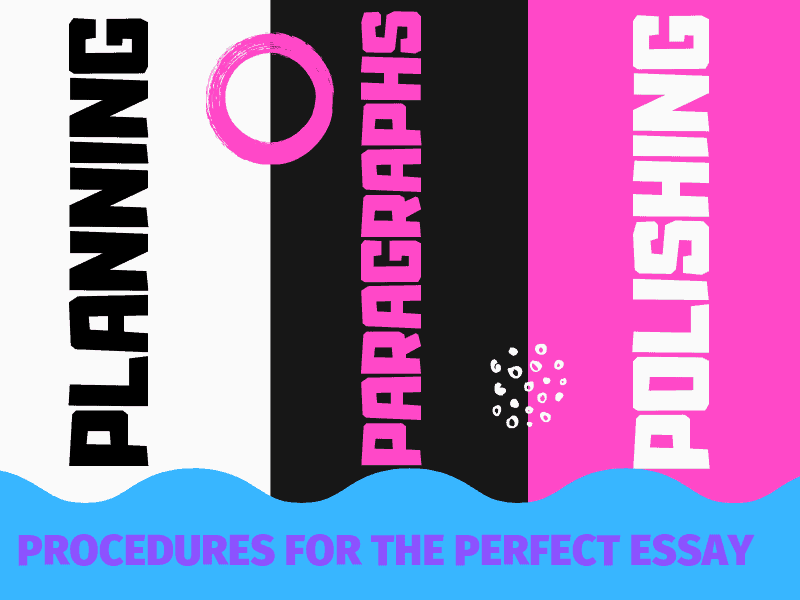
Essay Writing: A complete guide for students and teachers

The Writing Process

How to write a Conclusion

Top Research strategies for Students
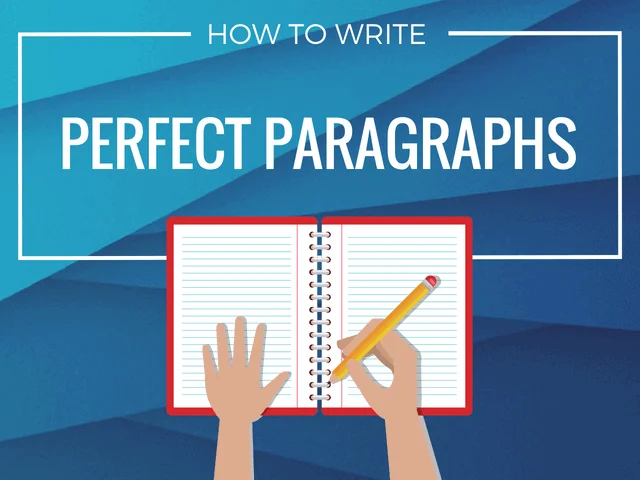
Perfect Paragraph Writing: The Ultimate Guide
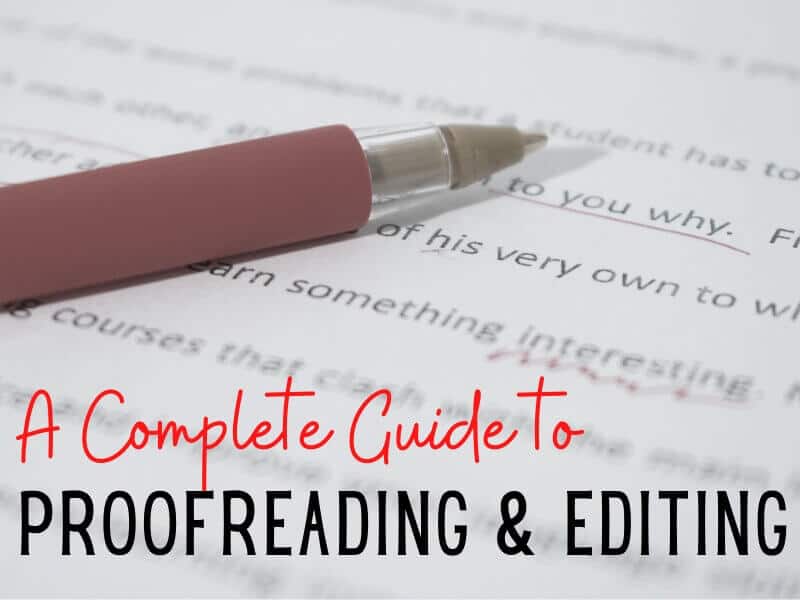
Teaching Proofreading and Editing Skills
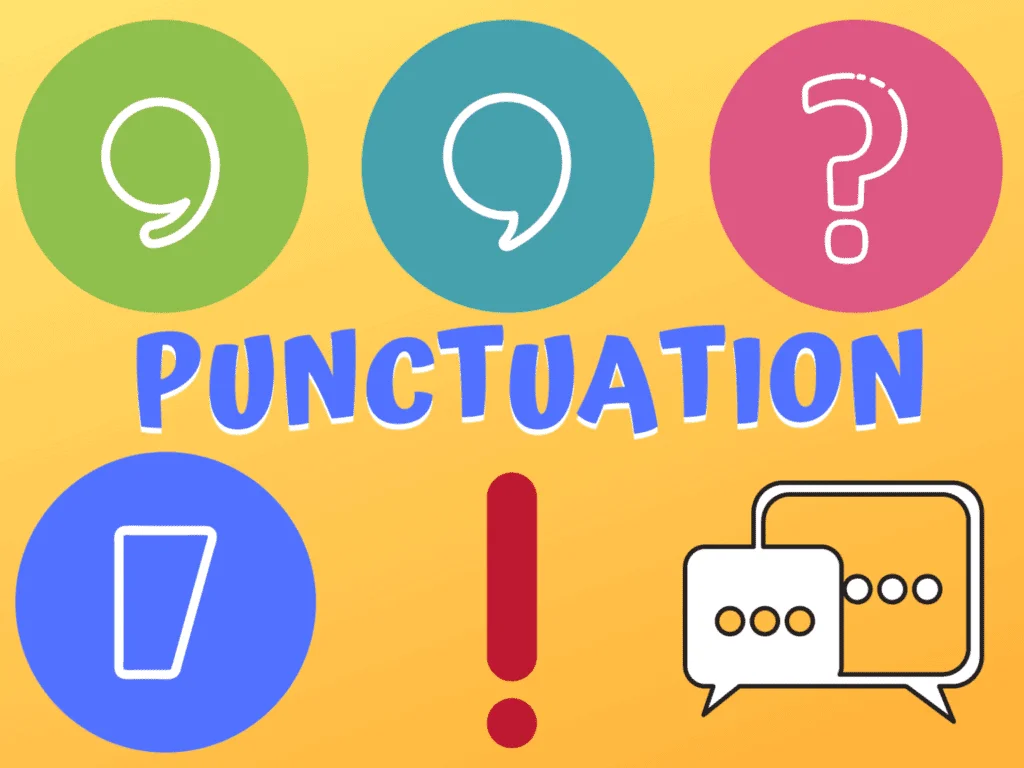
Punctuation rules for students and teachers: A complete guide
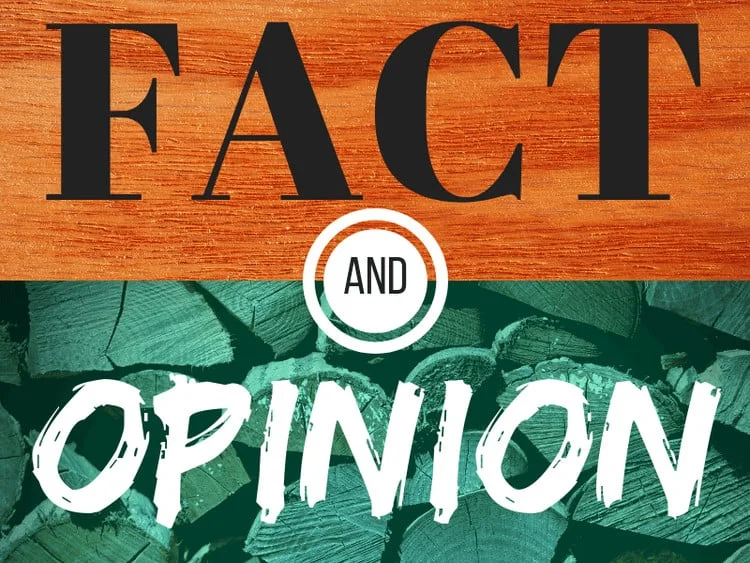
Teaching Fact and Opinion

Point of view in literacy: A guide for students and teachers
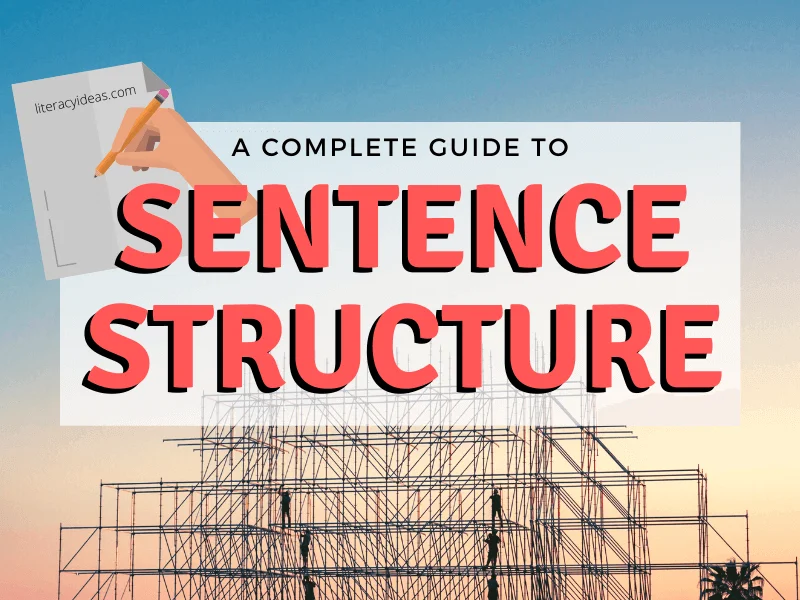
Sentence Structure: A Complete Guide (With Examples & Tasks)
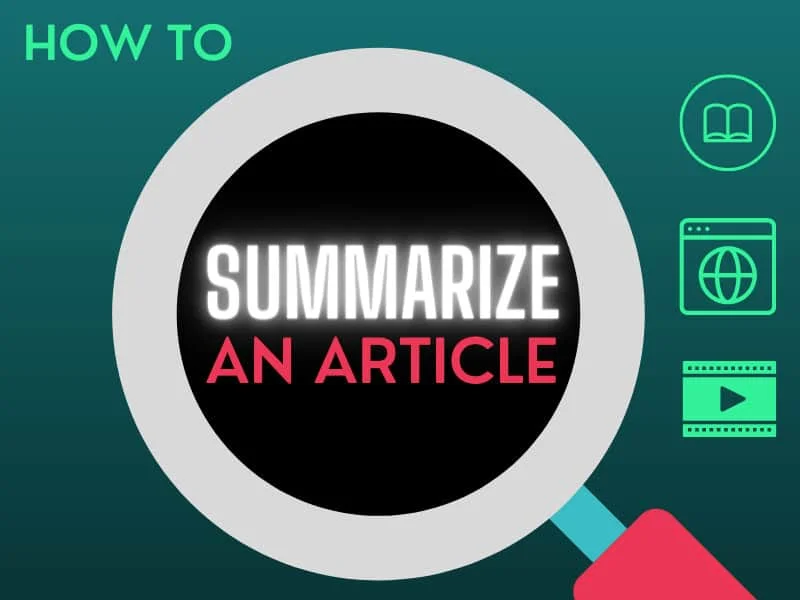
How to Summarize an Article

HOW TO WRITE A HYPOTHESIS
Guides for specific essay types.

How To Write a My Best Friend Essay

How to Write a Compare and Contrast Essay

How to Write Excellent Expository Essays

How to write an Argumentative Essay

How to Write Perfect Persuasive Essays in 5 Simple Steps

How to Write a Novel Study: A Complete Guide for Students & Teachers

How to Write a Biography
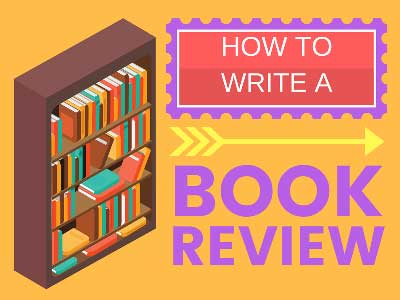
How to Write a Book Review: The Ultimate Guide
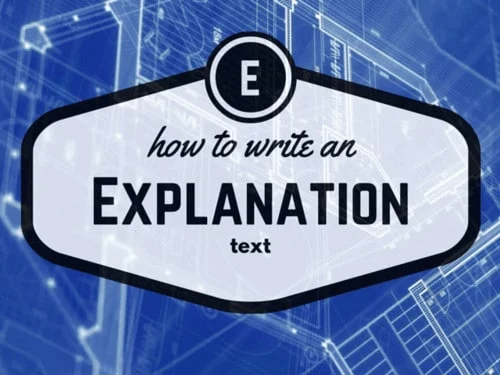
How to Write an Excellent Explanation Text

How to Write a Recount Text (And Improve your Writing Skills)

How to write a text response

Narrative Writing: A Complete Guide for Teachers and Students

How to write excellent Procedural Texts
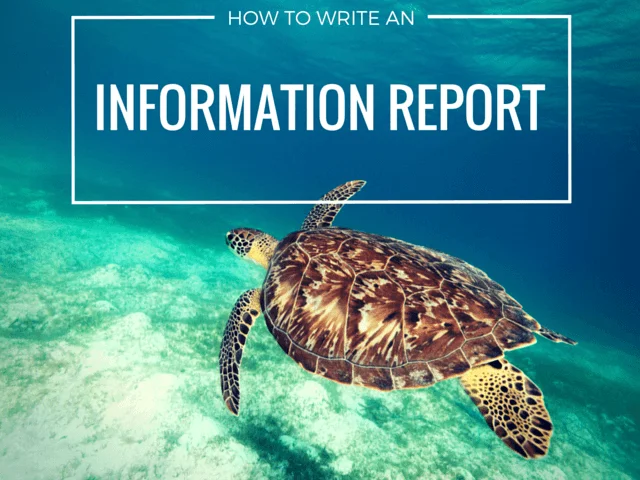
How to Write an Excellent Information Report

How to Write a Historical Recount Text

Personal Narrative Writing Guide
Teaching resources and lessons to support essay writing.
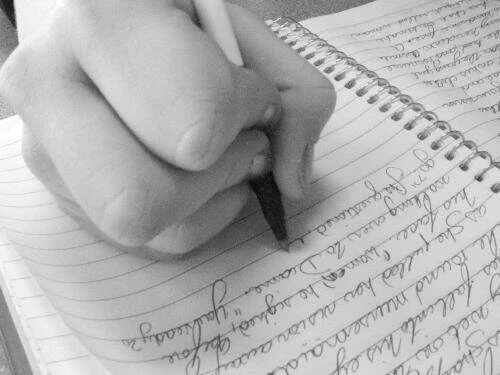
Top 25 Essay Topics for 2024

Glossary of literary terms

7 Evergreen Writing Activities for Elementary Students

The Author’s Purpose for students and teachers

The Ultimate Guide to Opinion Writing for Students and Teachers
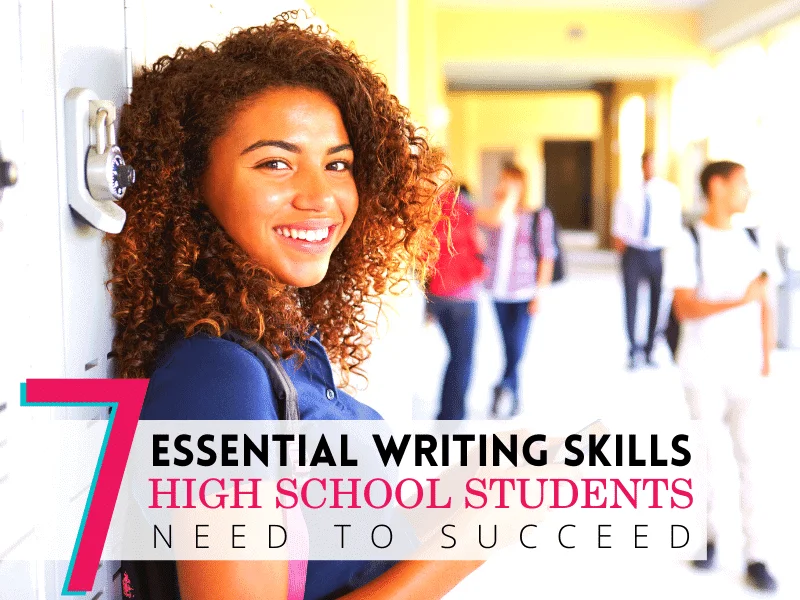
Top 7 High School Writing Skills for Students and Teachers

5 Top Persuasive Writing Lesson Plans for Students and Teachers

Explanation Texts: Top 5 Writing tips for younger students
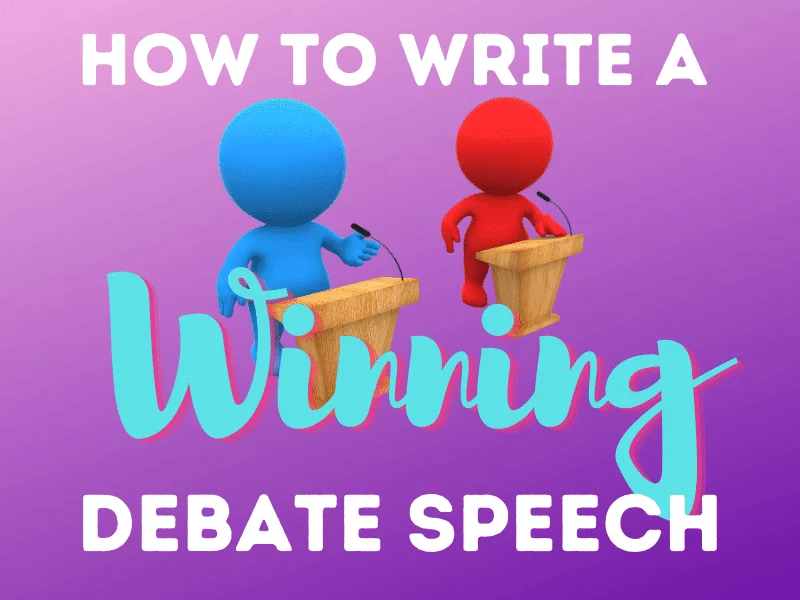
How to Write a Winning Debate Speech

23 Persuasive writing Topics for High School students
Don’t forget that we have loads of essay writing prompts and loads of essay resources and tools you can download today and use with your students.
Language resources
Articles for business
Find 1-on-1 tutors
- Preply Blog
- Learn English
- English writing
Mastering the art of essay writing in English
The key components of an essay
Selecting an appropriate topic, conducting thorough research, capturing the reader’s attention, writing a compelling thesis statement, organizing ideas coherently, supporting arguments with evidence, transitioning between paragraphs, ensuring paragraph unity and coherence, summarizing the key points, providing a thought-provoking closing section, reviewing grammar and punctuation, enhancing clarity and style, infusing your personal perspective, using descriptive language, techniques to overcome writing challenges, building a writing routine.
Did you know that over 1.35 billion people worldwide speak English as a first or second language? It’s not just a language but a bridge that connects cultures, ideas, and people. And one of the most crucial skills you can develop as an English learner is the ability to write compelling essays. Whether you’re a student, a professional, or simply someone who wants to communicate effectively, mastering the art of essay writing in English is a skill that can open doors and broaden horizons.
In this comprehensive guide, we’ll walk you through the ins and outs of essay writing in English. We’ll cover everything from the basics of essay structure to crafting captivating introductions, developing strong body paragraphs, creating compelling conclusions, and even polishing your essays through editing. After reading this article, you’ll understand how to write an essay in English that engages readers, presents your ideas clearly, and leaves a lasting impression.
How to write an essay: The basics
An essay is a written composition that presents and supports a particular idea, argument, or point of view. It’s a way to express your thoughts, share information, and persuade others to see things from your perspective. Essays come in various forms, such as argumentative, persuasive, expository, and descriptive, each serving a unique purpose.
An essay is like a journey that takes your reader from one point to another, guided by your words and ideas. To ensure a smooth ride, let’s break down the five key components of an essay:
Introduction
The starting point of your essay, where you introduce the topic and grab the reader’s attention
Thesis statement
A concise statement presenting your main argument or point of view, usually found at the end of the introduction
Body paragraphs
The heart of your essay, where you elaborate on your main points and provide supporting evidence
The closing section where you summarize your key points and restate your thesis while leaving the reader with something to ponder
Preparing for successful essay writing
Before you delve into the world of words and ideas, it’s essential to equip yourself with the right tools and strategies. As a seasoned traveler plans meticulously before a trip, successful essay writing requires careful preparation to ensure a smooth and fulfilling experience. This section explores the foundational steps that lay the groundwork for crafting compelling essays.
Before you embark on your essay-writing journey, choose a topic that interests you and aligns with the purpose of your essay. A well-chosen topic makes the writing process more enjoyable and ensures that your enthusiasm shines through your words.
Brainstorming techniques
Brainstorming is the fuel that ignites creativity. Jot down all the ideas that come to mind related to your chosen topic. Don’t worry about organizing them at this stage; the goal is to generate a pool of potential ideas to work with.
Researching and narrowing down ideas
Once you have a list of ideas, it’s time to research. Look for reliable sources that provide valuable information about your topic. As you gather information, start narrowing down your focus to the most compelling and relevant aspects.
Effective research is the backbone of a well-crafted essay. Utilize online databases, books, academic journals, and reputable websites to gather diverse information. Remember to take detailed notes to make referencing easier later on.
Reliable sources and references
Credibility matters in essay writing. Use sources that are trustworthy and well regarded within the academic community. When incorporating information from these sources, provide proper citations and references to avoid plagiarism.
Note-taking strategies
Develop a system for note-taking that works for you. Whether you prefer handwritten notes, digital documents, or both, ensure that your notes are organized, clear, and easily accessible when writing.

Crafting an engaging introduction
They say that first impressions are everything, and this sentiment holds especially true in the case of essay writing. An engaging introduction lays the foundation for an exceptional essay. Your introduction is the gateway that beckons readers into the world you’ve created with your words, urging them to explore further. In this section, we’ll see how to create introductions that grab attention, spark curiosity, and smoothly lead into your essay.
Think of your introduction as a gateway to your essay . Engage your reader with a captivating opening sentence that sparks curiosity and makes them want to read further.
For example, suppose we were to write an essay on Mary Jackson, the first Black woman to work at NASA. We could introduce it like this:
«Imagine a time when reaching for the stars meant defying more than just gravity. Mary Jackson, a brilliant mathematician and engineer, did just that. In a world where opportunities for Black women were limited, she became the first to break barriers at NASA.»
Anecdotes or quotes
Anecdotes and quotes are potent tools to humanize your essay and connect with your audience. Share a relevant personal story or a thought-provoking quote that ties into your topic.
Presenting a thought-provoking question
Posing a question in your introduction can stimulate your reader’s curiosity and encourage them to explore your essay in search of answers. Do you remember how we started this article? 😉
At the core of every well-constructed essay lies a guiding light – a thesis statement that illuminates the path your arguments will tread. Your thesis statement is the linchpin that holds your essay together, providing direction and purpose to every word you write.
Let’s continue with our essay example on Mary Jackson. Our thesis statement could look like this:
«This essay delves into the life of Mary Jackson, showcasing her pioneering spirit, determination, and lasting impact on science and society. As we explore her journey, you’ll see how her legacy continues to inspire generations, proving that even in the face of adversity, dreams can soar higher than the sky.»
Clarity and specificity
Your thesis statement is the compass that guides your essay. Make it clear, concise, and specific so that your reader knows what to expect.
Signposting the essay’s main points
Give your reader a road map of what lies ahead in your essay. Briefly outline the main points you’ll be covering in the body paragraphs.
«In the upcoming sections, this essay will trace the remarkable journey of Mary Jackson. She earned her place in history as the first Black woman to join NASA. We will unfold each phase of her life story, shedding light on her early years, educational achievements, significant contributions at NASA, unwavering commitment to diversity, enduring legacy, and resonance in today’s world.»
Developing strong body paragraphs
If the introduction of your essay is the grand entrance, then the body paragraphs are the chambers where your ideas come to life , flourish, and weave a compelling narrative. A skilled writer crafts body paragraphs that build upon one another to shape a coherent and persuasive argument. In this section, we’ll uncover the art of developing strong body paragraphs that are organized and informative and seamlessly flow from one another.
Each body paragraph should focus on a single main idea or argument. Organize your paragraphs in a logical sequence so that they always build upon the previous one.
Utilizing topic sentences
Start each body paragraph with a clear and concise topic sentence that previews the paragraph’s main point.
Logical flow of information
Ensure that your ideas flow smoothly from one paragraph to the next. Use transitional words and phrases to guide your reader through your essay effortlessly.
Support your claims with evidence, such as statistics, facts, examples, and expert opinions. This adds credibility and persuasiveness to your arguments.
Incorporating quotations and examples
Quotations and examples breathe life into your essay, providing real-world context for your ideas. Make sure to integrate them seamlessly and provide proper citations.
Proper citation and referencing
Avoid plagiarism by properly citing the sources of your information. Use a consistent citation style , such as the American Psychological Association (APA), Modern Language Association (MLA), or Chicago, and create a bibliography or “works cited” page.

Mastering essay structure and coherence
A compelling essay’s beauty lies in the depth of its content and the seamless flow of its ideas . In this section, we’ll explain how to understand better and use essay structure and coherence. We’ll talk about methods that turn paragraphs into a well-organized and exciting piece of writing.
Smooth transitions between paragraphs enhance the flow of your essay. Use transitional phrases to bridge ideas and create a seamless reading experience.
Using transitional words and phrases
Transitional words, such as “however,” “in addition,” and “on the other hand,” help connect ideas and show the relationship between different parts of your essay.
Maintaining the essay’s flow
Review your essay to ensure that the ideas progress logically and coherently. If a paragraph feels out of place, reorder or revise it.
Each paragraph should have a clear focus and relate directly to the main argument. Avoid going off on tangents that don’t contribute to your essay’s central theme.
Consistency in tense and voice
Maintain a consistent use of verb tenses and writing voice throughout your essay. Mixing past and present tense can confuse your reader.
Avoiding repetition and redundancy
Be mindful of repeating the same ideas or using redundant phrases. This not only adds unnecessary length but also dilutes the impact of your arguments.
Creating a compelling conclusion
The conclusion of an essay is not merely a summary but a reflection that echoes the essence of your arguments and ties them into a satisfying whole . In this section, we’ll explore the art of creating a compelling conclusion that reiterates your main points and offers a fresh perspective, a thought-provoking insight, or a call to action.
In your conclusion, briefly summarize the main points you’ve covered in your essay. Remind your reader of the journey you’ve taken them on.
Reiterating the thesis statement
Revisit your thesis statement, reinforcing the main argument you’ve presented throughout the essay.
Briefly summarizing the main arguments
Highlight the key arguments and evidence you’ve provided in the body paragraphs, emphasizing their significance.
Leave your reader with a final thought, question, or idea that encourages them to reflect on your essay’s topic and implications.

Implications or future considerations
If appropriate, discuss the broader implications of your essay’s topic or suggest areas for future research and exploration.
Leaving a lasting impression on the reader
End your essay with impact. Craft a conclusion that resonates with your reader, leaving them thinking about your words long after finishing your essay.
Returning to the essay example on Mary Jackson, here is a simple but impactful closing section:
«Mary Jackson’s journey is a powerful example of overcoming challenges. From her early interest in science to her important role at NASA, her legacy inspires diversity and progress. By exploring her achievements, we see that learning and fairness can create lasting change.
Mary Jackson’s story encourages us to face obstacles with determination. Reflecting on her journey, we’re prompted to think about how her influence urges us to value diversity and drive positive life changes.»

Polishing your essay: The editing process
In the editing process, your essay transforms from a rough draft into a polished gem ready to shine. In this section, we’ll delve into the nuances of the editing process , exploring techniques to review the grammar, punctuation, style, and clarity of your essay. From proofreading techniques to harnessing grammar-checking tools, we’ll see the steps to enhance your essay’s precision and eloquence.
Before submitting your essay, thoroughly review it for grammatical errors, punctuation mistakes, and spelling issues.
Proofreading techniques
Read your essay slowly and carefully, paying attention to each word and punctuation mark. This helps you catch typos and minor errors.
Utilizing grammar-checking tools
Use grammar-checking tools and software to catch any mistakes you have missed. However, don’t rely solely on these tools, as they may not detect all errors.
Ensure your sentences are clear and concise. Avoid overly complex language or jargon that might confuse your reader.
Sentence structure and variety
Vary the structures of your sentences to keep your writing engaging. Combine short and long sentences to create rhythm and flow.
Removing unnecessary jargon
Simplify your language and avoid unnecessary jargon, especially if your essay is intended for a general audience.
Showcasing your unique voice
In a world saturated with words, your voice is the signature that distinguishes your essay from the rest . Every writer possesses a unique voice that infuses personality and authenticity into their work. From striking a balance between objectivity and subjectivity to coloring your essay with personal insights, you’ll discover how to create a composition that echoes your individuality. As you embark on the quest to find and amplify your voice, remember that your words carry the imprint of your identity, enriching your essay with depth and resonance.
Feel free to share your insights and experiences if they are relevant to your topic. This can make your essay more relatable.
Balancing objectivity and subjectivity
While essays often express the author’s point of view, strive for a balanced approach that fairly presents both sides of an argument.
Expressing individual insights
Provide a thoughtful analysis and interpretation of the information you’ve presented. Your insights demonstrate your engagement with the topic.
Incorporate descriptive language to paint a vivid picture for your reader. Use sensory details to make your essay come to life.
Evoking imagery and sensory details
Engage your reader’s senses and invoke their imagination by describing sights, sounds, smells, tastes, and textures. This helps them immerse themselves in your essay.

Overcoming writer’s block
Writer’s block – the unwelcome companion that often lurks on the path to creativity – is a challenge familiar to every writer . From freewriting to cultivating a writing routine, there are several strategies to break through barriers and reignite your creative spark. Remember, even the most accomplished writers experience moments of resistance; what sets them apart is their ability to overcome it.
Writer’s block can strike at any time. Experiment with different techniques, such as freewriting and mind mapping, to break through creative barriers.
Freewriting and mind mapping
Engage in freewriting – set a timer and write whatever comes to mind without worrying about grammar or structure. Alternatively, use mind maps to organize your ideas visually .
Taking breaks and seeking inspiration
Step away from your writing and do something else when you’re stuck. A change of scenery or a brisk walk can help refresh your mind.
Establishing a consistent writing routine can help you stay motivated and make steady progress on your essays.
Setting goals and deadlines
Set achievable goals and deadlines for each step of the writing process. This keeps you accountable and prevents procrastination.
Finding your optimal writing environment
Identify the environment where you feel most productive and creative. It could be a quiet corner, a bustling café, or a peaceful park.
In this journey through the art of essay writing in English, you’ve learned how to craft an essay that captivates, informs, and persuades. From selecting a topic to preparing a compelling conclusion, every step contributes to the overall quality of your essay.
Essay writing is not just a skill; it’s a powerful tool that can shape opinions, influence decisions, and connect people across cultures and time zones.
As you embark on your essay-writing pursuits, consider seeking guidance from Preply tutors who specialize in various areas of English , including academic writing. With their expertise, you can refine your skills, receive personalized feedback, and master the art of essay writing in English. Prepare, research, and let your words pave the way for impactful communication and meaningful expression.
Share this article:

Alice is a web content writer and technical translator who is specializing in inclusive language. She is Italian but has been living in Barcelona, Spain, since 2012. Her work as a web writer results from many enriching experiences and collaborations with people and communities from very different international backgrounds. In addition to Italian, she speaks Spanish, English, French, and a little Catalan... and dreams of learning Portuguese. You can connect with her on LinkedIn or, if you speak Italian, have a look at her professional blog.
Next article

- May 31, 2024
Contractions in English: How to use them confidently when speaking and writing English
Learn how and when to use contractions in English. This guide provides a detailed explanation of contractions and examples of common contracted words.
Previous article

How to write the date in English: Tips and techniques
Learn how to write the date in English, including the formats in different countries and calendar systems.

Language learning
Explore our language learning resources for an effective linguistic journey.

Select your classes
Find lessons that match your level and goals
- English classes
Related articles
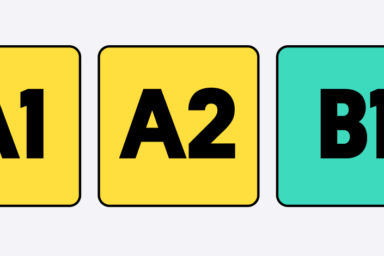
- English tips & resources
- April 1, 2024
A comprehensive guide to English language levels & how to level up!
Looking to improve your English language level? Our comprehensive guide will help you identify where you are & how to reach a higher CEFR level.

- English speaking
- January 7, 2024
7 best English speaking classes online in 2024
Discover which language learning platforms offer the best spoken english classes online and learn how to make the most out of them.

7 Valuable tips for improving your English writing skills
How to Improve Writing Skills in English? Excellent writing skills in English come from hard work. No one is born a great writer. Here are 7 English Writing Tips!
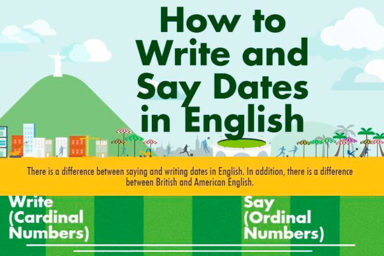
How to write dates in English: Differences between American English and British English
Do you need to use dates in your work routine? Then it would be good for you to learn how to write years in English. We have given you the main tips for that.

5 Tools to help improve your written English
English writing is tough, so we put together a list of our favorite English writing tools to help you out.

How to improve your speaking and writing skills
Would like to improve your writing and speaking skills in English? Here is the ultimate guide to help you with your goals. Click here right now and start to learn!
Essay Papers Writing Online
Tips and tricks for crafting engaging and effective essays.

Writing essays can be a challenging task, but with the right approach and strategies, you can create compelling and impactful pieces that captivate your audience. Whether you’re a student working on an academic paper or a professional honing your writing skills, these tips will help you craft essays that stand out.
Effective essays are not just about conveying information; they are about persuading, engaging, and inspiring readers. To achieve this, it’s essential to pay attention to various elements of the essay-writing process, from brainstorming ideas to polishing your final draft. By following these tips, you can elevate your writing and produce essays that leave a lasting impression.
Understanding the Essay Prompt
Before you start writing your essay, it is crucial to thoroughly understand the essay prompt or question provided by your instructor. The essay prompt serves as a roadmap for your essay and outlines the specific requirements or expectations.
Here are a few key things to consider when analyzing the essay prompt:
- Read the prompt carefully and identify the main topic or question being asked.
- Pay attention to any specific instructions or guidelines provided, such as word count, formatting requirements, or sources to be used.
- Identify key terms or phrases in the prompt that can help you determine the focus of your essay.
By understanding the essay prompt thoroughly, you can ensure that your essay addresses the topic effectively and meets the requirements set forth by your instructor.
Researching Your Topic Thoroughly

One of the key elements of writing an effective essay is conducting thorough research on your chosen topic. Research helps you gather the necessary information, facts, and examples to support your arguments and make your essay more convincing.
Here are some tips for researching your topic thoroughly:
| Don’t rely on a single source for your research. Use a variety of sources such as books, academic journals, reliable websites, and primary sources to gather different perspectives and valuable information. | |
| While conducting research, make sure to take detailed notes of important information, quotes, and references. This will help you keep track of your sources and easily refer back to them when writing your essay. | |
| Before using any information in your essay, evaluate the credibility of the sources. Make sure they are reliable, up-to-date, and authoritative to strengthen the validity of your arguments. | |
| Organize your research materials in a systematic way to make it easier to access and refer to them while writing. Create an outline or a research plan to structure your essay effectively. |
By following these tips and conducting thorough research on your topic, you will be able to write a well-informed and persuasive essay that effectively communicates your ideas and arguments.
Creating a Strong Thesis Statement
A thesis statement is a crucial element of any well-crafted essay. It serves as the main point or idea that you will be discussing and supporting throughout your paper. A strong thesis statement should be clear, specific, and arguable.
To create a strong thesis statement, follow these tips:
- Be specific: Your thesis statement should clearly state the main idea of your essay. Avoid vague or general statements.
- Be concise: Keep your thesis statement concise and to the point. Avoid unnecessary details or lengthy explanations.
- Be argumentative: Your thesis statement should present an argument or perspective that can be debated or discussed in your essay.
- Be relevant: Make sure your thesis statement is relevant to the topic of your essay and reflects the main point you want to make.
- Revise as needed: Don’t be afraid to revise your thesis statement as you work on your essay. It may change as you develop your ideas.
Remember, a strong thesis statement sets the tone for your entire essay and provides a roadmap for your readers to follow. Put time and effort into crafting a clear and compelling thesis statement to ensure your essay is effective and persuasive.
Developing a Clear Essay Structure
One of the key elements of writing an effective essay is developing a clear and logical structure. A well-structured essay helps the reader follow your argument and enhances the overall readability of your work. Here are some tips to help you develop a clear essay structure:
1. Start with a strong introduction: Begin your essay with an engaging introduction that introduces the topic and clearly states your thesis or main argument.
2. Organize your ideas: Before you start writing, outline the main points you want to cover in your essay. This will help you organize your thoughts and ensure a logical flow of ideas.
3. Use topic sentences: Begin each paragraph with a topic sentence that introduces the main idea of the paragraph. This helps the reader understand the purpose of each paragraph.
4. Provide evidence and analysis: Support your arguments with evidence and analysis to back up your main points. Make sure your evidence is relevant and directly supports your thesis.
5. Transition between paragraphs: Use transitional words and phrases to create flow between paragraphs and help the reader move smoothly from one idea to the next.
6. Conclude effectively: End your essay with a strong conclusion that summarizes your main points and reinforces your thesis. Avoid introducing new ideas in the conclusion.
By following these tips, you can develop a clear essay structure that will help you effectively communicate your ideas and engage your reader from start to finish.
Using Relevant Examples and Evidence
When writing an essay, it’s crucial to support your arguments and assertions with relevant examples and evidence. This not only adds credibility to your writing but also helps your readers better understand your points. Here are some tips on how to effectively use examples and evidence in your essays:
- Choose examples that are specific and relevant to the topic you’re discussing. Avoid using generic examples that may not directly support your argument.
- Provide concrete evidence to back up your claims. This could include statistics, research findings, or quotes from reliable sources.
- Interpret the examples and evidence you provide, explaining how they support your thesis or main argument. Don’t assume that the connection is obvious to your readers.
- Use a variety of examples to make your points more persuasive. Mixing personal anecdotes with scholarly evidence can make your essay more engaging and convincing.
- Cite your sources properly to give credit to the original authors and avoid plagiarism. Follow the citation style required by your instructor or the publication you’re submitting to.
By integrating relevant examples and evidence into your essays, you can craft a more convincing and well-rounded piece of writing that resonates with your audience.
Editing and Proofreading Your Essay Carefully
Once you have finished writing your essay, the next crucial step is to edit and proofread it carefully. Editing and proofreading are essential parts of the writing process that help ensure your essay is polished and error-free. Here are some tips to help you effectively edit and proofread your essay:
1. Take a Break: Before you start editing, take a short break from your essay. This will help you approach the editing process with a fresh perspective.
2. Read Aloud: Reading your essay aloud can help you catch any awkward phrasing or grammatical errors that you may have missed while writing. It also helps you check the flow of your essay.
3. Check for Consistency: Make sure that your essay has a consistent style, tone, and voice throughout. Check for inconsistencies in formatting, punctuation, and language usage.
4. Remove Unnecessary Words: Look for any unnecessary words or phrases in your essay and remove them to make your writing more concise and clear.
5. Proofread for Errors: Carefully proofread your essay for spelling, grammar, and punctuation errors. Pay attention to commonly misused words and homophones.
6. Get Feedback: It’s always a good idea to get feedback from someone else. Ask a friend, classmate, or teacher to review your essay and provide constructive feedback.
By following these tips and taking the time to edit and proofread your essay carefully, you can improve the overall quality of your writing and make sure your ideas are effectively communicated to your readers.
Related Post
How to master the art of writing expository essays and captivate your audience, convenient and reliable source to purchase college essays online, step-by-step guide to crafting a powerful literary analysis essay, unlock success with a comprehensive business research paper example guide, unlock your writing potential with writers college – transform your passion into profession, “unlocking the secrets of academic success – navigating the world of research papers in college”, master the art of sociological expression – elevate your writing skills in sociology.

Essay and dissertation writing skills
Planning your essay
Writing your introduction
Structuring your essay
- Writing essays in science subjects
- Brief video guides to support essay planning and writing
- Writing extended essays and dissertations
- Planning your dissertation writing time
Structuring your dissertation
- Top tips for writing longer pieces of work
Advice on planning and writing essays and dissertations
University essays differ from school essays in that they are less concerned with what you know and more concerned with how you construct an argument to answer the question. This means that the starting point for writing a strong essay is to first unpick the question and to then use this to plan your essay before you start putting pen to paper (or finger to keyboard).
A really good starting point for you are these short, downloadable Tips for Successful Essay Writing and Answering the Question resources. Both resources will help you to plan your essay, as well as giving you guidance on how to distinguish between different sorts of essay questions.
You may find it helpful to watch this seven-minute video on six tips for essay writing which outlines how to interpret essay questions, as well as giving advice on planning and structuring your writing:
Different disciplines will have different expectations for essay structure and you should always refer to your Faculty or Department student handbook or course Canvas site for more specific guidance.
However, broadly speaking, all essays share the following features:
Essays need an introduction to establish and focus the parameters of the discussion that will follow. You may find it helpful to divide the introduction into areas to demonstrate your breadth and engagement with the essay question. You might define specific terms in the introduction to show your engagement with the essay question; for example, ‘This is a large topic which has been variously discussed by many scientists and commentators. The principal tension is between the views of X and Y who define the main issues as…’ Breadth might be demonstrated by showing the range of viewpoints from which the essay question could be considered; for example, ‘A variety of factors including economic, social and political, influence A and B. This essay will focus on the social and economic aspects, with particular emphasis on…..’
Watch this two-minute video to learn more about how to plan and structure an introduction:
The main body of the essay should elaborate on the issues raised in the introduction and develop an argument(s) that answers the question. It should consist of a number of self-contained paragraphs each of which makes a specific point and provides some form of evidence to support the argument being made. Remember that a clear argument requires that each paragraph explicitly relates back to the essay question or the developing argument.
- Conclusion: An essay should end with a conclusion that reiterates the argument in light of the evidence you have provided; you shouldn’t use the conclusion to introduce new information.
- References: You need to include references to the materials you’ve used to write your essay. These might be in the form of footnotes, in-text citations, or a bibliography at the end. Different systems exist for citing references and different disciplines will use various approaches to citation. Ask your tutor which method(s) you should be using for your essay and also consult your Department or Faculty webpages for specific guidance in your discipline.
Essay writing in science subjects
If you are writing an essay for a science subject you may need to consider additional areas, such as how to present data or diagrams. This five-minute video gives you some advice on how to approach your reading list, planning which information to include in your answer and how to write for your scientific audience – the video is available here:
A PDF providing further guidance on writing science essays for tutorials is available to download.
Short videos to support your essay writing skills
There are many other resources at Oxford that can help support your essay writing skills and if you are short on time, the Oxford Study Skills Centre has produced a number of short (2-minute) videos covering different aspects of essay writing, including:
- Approaching different types of essay questions
- Structuring your essay
- Writing an introduction
- Making use of evidence in your essay writing
- Writing your conclusion
Extended essays and dissertations
Longer pieces of writing like extended essays and dissertations may seem like quite a challenge from your regular essay writing. The important point is to start with a plan and to focus on what the question is asking. A PDF providing further guidance on planning Humanities and Social Science dissertations is available to download.
Planning your time effectively
Try not to leave the writing until close to your deadline, instead start as soon as you have some ideas to put down onto paper. Your early drafts may never end up in the final work, but the work of committing your ideas to paper helps to formulate not only your ideas, but the method of structuring your writing to read well and conclude firmly.
Although many students and tutors will say that the introduction is often written last, it is a good idea to begin to think about what will go into it early on. For example, the first draft of your introduction should set out your argument, the information you have, and your methods, and it should give a structure to the chapters and sections you will write. Your introduction will probably change as time goes on but it will stand as a guide to your entire extended essay or dissertation and it will help you to keep focused.
The structure of extended essays or dissertations will vary depending on the question and discipline, but may include some or all of the following:
- The background information to - and context for - your research. This often takes the form of a literature review.
- Explanation of the focus of your work.
- Explanation of the value of this work to scholarship on the topic.
- List of the aims and objectives of the work and also the issues which will not be covered because they are outside its scope.
The main body of your extended essay or dissertation will probably include your methodology, the results of research, and your argument(s) based on your findings.
The conclusion is to summarise the value your research has added to the topic, and any further lines of research you would undertake given more time or resources.
Tips on writing longer pieces of work
Approaching each chapter of a dissertation as a shorter essay can make the task of writing a dissertation seem less overwhelming. Each chapter will have an introduction, a main body where the argument is developed and substantiated with evidence, and a conclusion to tie things together. Unlike in a regular essay, chapter conclusions may also introduce the chapter that will follow, indicating how the chapters are connected to one another and how the argument will develop through your dissertation.
For further guidance, watch this two-minute video on writing longer pieces of work .
Systems & Services
Access Student Self Service
- Student Self Service
- Self Service guide
- Registration guide
- Libraries search
- OXCORT - see TMS
- GSS - see Student Self Service
- The Careers Service
- Oxford University Sport
- Online store
- Gardens, Libraries and Museums
- Researchers Skills Toolkit
- LinkedIn Learning (formerly Lynda.com)
- Access Guide
- Lecture Lists
- Exam Papers (OXAM)
- Oxford Talks
Latest student news
CAN'T FIND WHAT YOU'RE LOOKING FOR?
Try our extensive database of FAQs or submit your own question...
Ask a question
- Academic Skills
- Reading, writing and referencing
Writing a great essay
This resource covers key considerations when writing an essay.
While reading a student’s essay, markers will ask themselves questions such as:
- Does this essay directly address the set task?
- Does it present a strong, supported position?
- Does it use relevant sources appropriately?
- Is the expression clear, and the style appropriate?
- Is the essay organised coherently? Is there a clear introduction, body and conclusion?
You can use these questions to reflect on your own writing. Here are six top tips to help you address these criteria.
1. Analyse the question
Student essays are responses to specific questions. As an essay must address the question directly, your first step should be to analyse the question. Make sure you know exactly what is being asked of you.
Generally, essay questions contain three component parts:
- Content terms: Key concepts that are specific to the task
- Limiting terms: The scope that the topic focuses on
- Directive terms: What you need to do in relation to the content, e.g. discuss, analyse, define, compare, evaluate.
Look at the following essay question:
Discuss the importance of light in Gothic architecture.
- Content terms: Gothic architecture
- Limiting terms: the importance of light. If you discussed some other feature of Gothic architecture, for example spires or arches, you would be deviating from what is required. This essay question is limited to a discussion of light. Likewise, it asks you to write about the importance of light – not, for example, to discuss how light enters Gothic churches.
- Directive term: discuss. This term asks you to take a broad approach to the variety of ways in which light may be important for Gothic architecture. You should introduce and consider different ideas and opinions that you have met in academic literature on this topic, citing them appropriately .
For a more complex question, you can highlight the key words and break it down into a series of sub-questions to make sure you answer all parts of the task. Consider the following question (from Arts):
To what extent can the American Revolution be understood as a revolution ‘from below’? Why did working people become involved and with what aims in mind?
The key words here are American Revolution and revolution ‘from below’. This is a view that you would need to respond to in this essay. This response must focus on the aims and motivations of working people in the revolution, as stated in the second question.
2. Define your argument
As you plan and prepare to write the essay, you must consider what your argument is going to be. This means taking an informed position or point of view on the topic presented in the question, then defining and presenting a specific argument.
Consider these two argument statements:
The architectural use of light in Gothic cathedrals physically embodied the significance of light in medieval theology.
In the Gothic cathedral of Cologne, light served to accentuate the authority and ritual centrality of the priest.
Statements like these define an essay’s argument. They give coherence by providing an overarching theme and position towards which the entire essay is directed.
3. Use evidence, reasoning and scholarship
To convince your audience of your argument, you must use evidence and reasoning, which involves referring to and evaluating relevant scholarship.
- Evidence provides concrete information to support your claim. It typically consists of specific examples, facts, quotations, statistics and illustrations.
- Reasoning connects the evidence to your argument. Rather than citing evidence like a shopping list, you need to evaluate the evidence and show how it supports your argument.
- Scholarship is used to show how your argument relates to what has been written on the topic (citing specific works). Scholarship can be used as part of your evidence and reasoning to support your argument.
4. Organise a coherent essay
An essay has three basic components - introduction, body and conclusion.
The purpose of an introduction is to introduce your essay. It typically presents information in the following order:
- A general statement about the topic that provides context for your argument
- A thesis statement showing your argument. You can use explicit lead-ins, such as ‘This essay argues that...’
- A ‘road map’ of the essay, telling the reader how it is going to present and develop your argument.
Example introduction
"To what extent can the American Revolution be understood as a revolution ‘from below’? Why did working people become involved and with what aims in mind?"
Introduction*
Historians generally concentrate on the twenty-year period between 1763 and 1783 as the period which constitutes the American Revolution [This sentence sets the general context of the period] . However, when considering the involvement of working people, or people from below, in the revolution it is important to make a distinction between the pre-revolutionary period 1763-1774 and the revolutionary period 1774-1788, marked by the establishment of the continental Congress(1) [This sentence defines the key term from below and gives more context to the argument that follows] . This paper will argue that the nature and aims of the actions of working people are difficult to assess as it changed according to each phase [This is the thesis statement] . The pre-revolutionary period was characterised by opposition to Britain’s authority. During this period the aims and actions of the working people were more conservative as they responded to grievances related to taxes and scarce land, issues which directly affected them. However, examination of activities such as the organisation of crowd action and town meetings, pamphlet writing, formal communications to Britain of American grievances and physical action in the streets, demonstrates that their aims and actions became more revolutionary after 1775 [These sentences give the ‘road map’ or overview of the content of the essay] .
The body of the essay develops and elaborates your argument. It does this by presenting a reasoned case supported by evidence from relevant scholarship. Its shape corresponds to the overview that you provided in your introduction.
The body of your essay should be written in paragraphs. Each body paragraph should develop one main idea that supports your argument. To learn how to structure a paragraph, look at the page developing clarity and focus in academic writing .
Your conclusion should not offer any new material. Your evidence and argumentation should have been made clear to the reader in the body of the essay.
Use the conclusion to briefly restate the main argumentative position and provide a short summary of the themes discussed. In addition, also consider telling your reader:
- What the significance of your findings, or the implications of your conclusion, might be
- Whether there are other factors which need to be looked at, but which were outside the scope of the essay
- How your topic links to the wider context (‘bigger picture’) in your discipline.
Do not simply repeat yourself in this section. A conclusion which merely summarises is repetitive and reduces the impact of your paper.
Example conclusion
Conclusion*.
Although, to a large extent, the working class were mainly those in the forefront of crowd action and they also led the revolts against wealthy plantation farmers, the American Revolution was not a class struggle [This is a statement of the concluding position of the essay]. Working people participated because the issues directly affected them – the threat posed by powerful landowners and the tyranny Britain represented. Whereas the aims and actions of the working classes were more concerned with resistance to British rule during the pre-revolutionary period, they became more revolutionary in nature after 1775 when the tension with Britain escalated [These sentences restate the key argument]. With this shift, a change in ideas occurred. In terms of considering the Revolution as a whole range of activities such as organising riots, communicating to Britain, attendance at town hall meetings and pamphlet writing, a difficulty emerges in that all classes were involved. Therefore, it is impossible to assess the extent to which a single group such as working people contributed to the American Revolution [These sentences give final thoughts on the topic].
5. Write clearly
An essay that makes good, evidence-supported points will only receive a high grade if it is written clearly. Clarity is produced through careful revision and editing, which can turn a good essay into an excellent one.
When you edit your essay, try to view it with fresh eyes – almost as if someone else had written it.
Ask yourself the following questions:
Overall structure
- Have you clearly stated your argument in your introduction?
- Does the actual structure correspond to the ‘road map’ set out in your introduction?
- Have you clearly indicated how your main points support your argument?
- Have you clearly signposted the transitions between each of your main points for your reader?
- Does each paragraph introduce one main idea?
- Does every sentence in the paragraph support that main idea?
- Does each paragraph display relevant evidence and reasoning?
- Does each paragraph logically follow on from the one before it?
- Is each sentence grammatically complete?
- Is the spelling correct?
- Is the link between sentences clear to your readers?
- Have you avoided redundancy and repetition?
See more about editing on our editing your writing page.
6. Cite sources and evidence
Finally, check your citations to make sure that they are accurate and complete. Some faculties require you to use a specific citation style (e.g. APA) while others may allow you to choose a preferred one. Whatever style you use, you must follow its guidelines correctly and consistently. You can use Recite, the University of Melbourne style guide, to check your citations.
Further resources
- Germov, J. (2011). Get great marks for your essays, reports and presentations (3rd ed.). NSW: Allen and Unwin.
- Using English for Academic Purposes: A guide for students in Higher Education [online]. Retrieved January 2020 from http://www.uefap.com
- Williams, J.M. & Colomb, G. G. (2010) Style: Lessons in clarity and grace. 10th ed. New York: Longman.
* Example introduction and conclusion adapted from a student paper.

Looking for one-on-one advice?
Get tailored advice from an Academic Skills Adviser by booking an Individual appointment, or get quick feedback from one of our Academic Writing Mentors via email through our Writing advice service.
Go to Student appointments
Essays That Worked

The essays are a place to show us who you are and who you’ll be in our community.
It’s a chance to add depth to something that is important to you and tell the admissions committee more about your background or goals. Below you’ll find selected examples of essays that “worked,” as nominated by our admissions committee. In each of these essays, students were able to share stories from their everyday lives to reveal something about their character, values, and life that aligned with the culture and values at Hopkins.
Read essays that worked from Transfer applicants .
Hear from the class of 2027.
These selections represent just a few examples of essays we found impressive and helpful during the past admissions cycle. We hope these essays inspire you as you prepare to compose your own personal statements. The most important thing to remember is to be original as you share your own story, thoughts, and ideas with us.

Ordering the Disorderly
Ellie’s essay skillfully uses the topic of entropy as an extended metaphor. Through it, we see reflections about who they are and who they aspire to be.

Pack Light, But Be Prepared
In Pablo’s essay, the act of packing for a pilgrimage becomes a metaphor for the way humans accumulate experiences in their life’s journey and what we can learn from them. As we join Pablo through the diverse phases of their life, we gain insights into their character and values.

Tikkun Olam
Julieta illustrates how the concept of Tikkun Olam, “a desire to help repair the world,” has shaped their passions and drives them to pursue experiences at Hopkins.

Kashvi’s essay encapsulates a heartfelt journey of self-discovery and the invaluable teachings of Rock, their 10-year-old dog. Through the lens of their companionship, Kashvi walked us through valuable lessons on responsibility, friendship, patience, and unconditional love.

Classical Reflections in Herstory
Maddie’s essay details their intellectual journey using their love of Greek classics. They incorporate details that reveal the roots of their academic interests: storytelling, literary devices, and translation. As their essay progresses, so do Maddie’s intellectual curiosities.

My Spotify Playlist
Alyssa’s essay reflects on special memories through the creative lens of Spotify playlists. They use three examples to highlight their experiences with their tennis team, finding a virtual community during the pandemic, and co-founding a nonprofit to help younger students learn about STEM.
More essays that worked
We share essays from previously admitted students—along with feedback from our admissions committee—so you can understand what made them effective and how to start crafting your own.

Application Workshops
Our interactive workshops—on topics like the college search process and essay preparation—will help you build your strongest application when you’re ready to apply.
REGISTER FOR AN APPLICATION WORKSHOP
Application tips in your inbox
Join our mailing list to receive insights from our admissions committee, event invites, and other resources for your college journey.
Virtual Summer Open House
Join us on Saturday, July 13, to see what it’s like to live and learn at the #1 research university.
Quick Links:
- Majors, Minors & Programs
- Application Deadlines & Requirements
- College Planning Guide
Bar Exam Toolbox Podcast Episode 267: Quick Tips -- Using Past Bar Essay Questions for Practice
In this episode, we See more + Welcome back to the Bar Exam Toolbox podcast! In this week's episode, we're talking about using past bar exam essay questions as part of your study process. In particular, we talk about when to start practicing, how to practice, how much of your study time to spend practicing, and how to self-evaluate your answers.
In this episode, we discuss:
>When to start practicing essay questions and how to practice effectively
>Allocating study time for essay practice
>Self-evaluating your answers
>Resources for practice questions and feedback
>Private Bar Exam Tutoring (https://barexamtoolbox.com/private-bar-exam-tutoring/)
>Brainy Bar Bank – UBE (MEE + MPT) (https://barexamtoolbox.com/brainy-bar-bank-ube-mee-mpt/)
>Brainy Bar Bank – California Bar Exam (https://barexamtoolbox.com/brainy-bar-bank-california-bar-exam/)
>NCBE: National Conference of Bar Examiners (https://www.ncbex.org/)
>The State Bar of California (https://www.calbar.ca.gov/)
>Podcast Episode 51: Making the Most of Your Bar Exam Practice (https://barexamtoolbox.com/podcast-episode-51-making-the-most-of-your-bar-exam-practice/)
>Copying Model Answers Isn't "Practice" (https://barexamtoolbox.com/copying-model-answers-isnt-practice/)
>Benefits of Practice Questions (https://barexamtoolbox.com/benefits-of-practice-questions/)
Download the Transcript (https://barexamtoolbox.com/episode-267-quick-tips-using-past-bar-essay-questions-for-practice/)
If you enjoy the podcast, we'd love a nice review and/or rating on Apple Podcasts (https://itunes.apple.com/us/podcast/bar-exam-toolbox-podcast-pass-bar-exam-less-stress/id1370651486) or your favorite listening app. And feel free to reach out to us directly. You can always reach us via the contact form on the Bar Exam Toolbox website (https://barexamtoolbox.com/contact-us/). Finally, if you don't want to miss anything, you can sign up for podcast updates (https://barexamtoolbox.com/get-bar-exam-toolbox-podcast-updates/)!
Thanks for listening!
Latest Posts
- Bar Exam Toolbox Podcast Episode 267: Quick Tips -- Using Past Bar Essay Questions for Practice Audio
- Law School Toolbox Podcast Episode 456: Top 10 Tips for Getting Ready for Your 3L Year Audio
- Bar Exam Toolbox Podcast Episode 266: Quick Tips -- Pre-Writing Outlining for Bar Essays Audio
- Law School Toolbox Podcast Episode 455: Top 10 Tips for Getting Ready for Your 2L Year Audio
- Bar Exam Toolbox Podcast Episode 265: Quick Tips -- What If You Run Out of Time While Writing a Bar Essay Answer? Audio
See more »
Other MultiMedia by Law School Toolbox
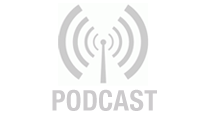
Law School Toolbox Podcast Episode 456: Top 10 Tips for Getting Ready for Your 3L Year
Bar Exam Toolbox Podcast Episode 266: Quick Tips -- Pre-Writing Outlining for Bar Essays
Law School Toolbox Podcast Episode 455: Top 10 Tips for Getting Ready for Your 2L Year
Bar Exam Toolbox Podcast Episode 265: Quick Tips -- What If You Run Out of Time While Writing a Bar Essay Answer?
Law School Toolbox Podcast Episode 454: Top 10 Tips for Getting Ready for Your 1L Year
Bar Exam Toolbox Podcast Episode 264: Listen and Learn -- Concurrent Estates (Property)
Law School Toolbox Podcast Episode 453: Law School Applications (w/Hamada Zahawi of Write Track Admissions)
Law School Toolbox Podcast Episode 452: Standardized Testing Equity (w/David Klieger from Aspen Publishing)
Bar Exam Toolbox Podcast Episode 263: Navigating Accommodations and Self-Advocacy in the Legal Field (w/AJ Link)
Law School Toolbox Podcast Episode 451: From Application to Acceptance: The Law School Admissions Timeline (w/Anna Ivey)
Law School Toolbox Podcast Episode 450: Pre-OCI Hiring (w/Sadie Jones)
Bar Exam Toolbox Podcast Episode 262: Listen and Learn -- Motions for Judgment as a Matter of Law and Motions for New Trial (Civ Pro)
Law School Toolbox Podcast Episode 449: Implications of AI for the Legal Profession (w/Kevin Surace)
Bar Exam Toolbox Podcast Episode 261: Quick Tips -- Bar Exam Accommodations Basics
Law School Toolbox Podcast Episode 448: 10 Things to Consider When Applying to Law School (w/Steve Schwartz)
Bar Exam Toolbox Podcast Episode 260: Listen and Learn -- Elements of a Crime
Law School Toolbox Podcast Episode 447: Managing the Workload in a Summer Law Job (w/Sadie Jones)
Bar Exam Toolbox Podcast Episode 259: How to Minimize Borrowing for the Bar Exam (w/Jesse Mecham from YNAB)
Law School Toolbox Podcast Episode 446: Quick Tips -- Doing the Reading for Your Law School Classes
Refine your interests »
Written by:

PUBLISH YOUR CONTENT ON JD SUPRA NOW
- Increased visibility
- Actionable analytics
- Ongoing guidance
Published In:
Law school toolbox on:.

"My best business intelligence, in one easy email…"

Creativity Has Left the Chat: The Price of Debiasing Language Models
33 Pages Posted: 17 Jun 2024
Behnam Mohammadi
Carnegie Mellon University, David A. Tepper School of Business, Students
Date Written: June 08, 2024
Large Language Models (LLMs) have revolutionized natural language processing but can exhibit biases and may generate toxic content. While alignment techniques like Reinforcement Learning from Human Feedback (RLHF) reduce these issues, their impact on creativity, defined as syntactic and semantic diversity, remains unexplored. We investigate the unintended consequences of RLHF on the creativity of LLMs through three experiments focusing on the Llama-2 series. Our findings reveal that aligned models exhibit lower entropy in token predictions, form distinct clusters in the embedding space, and gravitate towards “attractor states”, indicating limited output diversity. Our findings have significant implications for marketers who rely on LLMs for creative tasks such as copywriting, ad creation, and customer persona generation. The trade-off between consistency and creativity in aligned models should be carefully considered when selecting the appropriate model for a given application. We also discuss the importance of prompt engineering in harnessing the creative potential of base models.
Keywords: Large Language Models (LLMs), Reinforcement Learning from Human Feedback (RLHF), AI Alignment, Recommendation Systems, Diversity and Creativity
Suggested Citation: Suggested Citation
Behnam Mohammadi (Contact Author)
Carnegie mellon university, david a. tepper school of business, students ( email ).
Pittsburgh, PA United States
HOME PAGE: http://aplaceofmind.net
Do you have a job opening that you would like to promote on SSRN?
Paper statistics, related ejournals, marketing science ejournal.
Subscribe to this fee journal for more curated articles on this topic
Behavioral Marketing eJournal
Artificial intelligence ejournal, artificial intelligence - law, policy, & ethics ejournal, frontiers in information systems research & applications ejournal.
6 Insider Tips from Fulbright Winners for Your 2024 Application

The Fulbright Program is a prestigious international educational exchange initiative designed to increase mutual understanding internationally through diplomacy. Sponsored by the U.S. government, the program offers various grants for students and scholars to undertake advanced research , university lecturing, and teaching in over 140 countries worldwide.
Fulbright is unique in its inclusivity, providing opportunities for individuals at every career level and across all academic disciplines. Whether you’re a recent graduate, an early-career professional, or an experienced researcher , there’s a Fulbright program tailored to your background and goals. This flexibility and breadth make Fulbright a valuable and transformative experience for participants from diverse fields and stages in their careers.
Each year, thousands of applicants vie for these coveted awards. To help future applicants succeed, we’ve gathered the top five tips from past Fulbright winners.
1. Connect with Current Fulbright Scholars
Lily Mott is a US-UK Fulbright Scholar pursuing an MA in Digital Media and Society at Cardiff University. She is a multimedia journalist from Colorado, USA, and used her Fulbright opportunity to advance her career.
Lily emphasizes the importance of networking with current Fulbright Scholars for her tips. She suggests contacting LinkedIn or other platforms to learn from their experiences and insights. “I have met so many inspiring Fulbright Scholars in my cohort,” she says. “Do some research, send a message, and introduce yourself.” Engaging with current and past scholars can provide valuable advice and mentorship, making the application process less daunting.
2. Silence Your Inner Critic
Olugbenga Joseph is a Nigerian American scholar, educator, and artist who was a Fulbright English Teaching Assistantship in Spain. He taught English, history, and art there and served as a U.S. Student Fulbright Alumni Ambassador.
Olubenga advises applicants to manage the “mental game” of the application process. He emphasizes the importance of silencing self-doubt and reflecting on one’s achievements and goals. “You are good enough!” Olugbenga also highlights the importance of understanding country-specific nuances and collecting data from various sources. “This could mean listening to the Fulbright webinars and contacting your university’s fellowship office. It could also mean talking to Fulbright alumni in your desired host country.” His comprehensive approach has helped him succeed in Fulbright and winning the Citizen Diplomacy Action Fund .
3. Treat Your Creativity as a Professional Skill
Our next tip is from Miles Iton , an academic, entrepreneur, and music artist whose journey exemplifies the transformative power of passion-driven education. Through Fulbright Taiwan, he gained unique insights into the intersection of creative arts and learning. In this interview, Miles discusses his Fulbright experiences, his innovative venture, Lo-Fi Language Learning, and the profound impact of these fellowships on his personal and professional growth.
He believes approaching creative practice as applicable skills can give applicants an edge in fellowship applications and beyond. “Approaching my creative practice as a transferable skill is how I managed to give myself an edge in fellowship applications, cross over into new industries, and establish a vantage point for building my small business acumen. Thus, the best tip I can offer to anyone of a creative bent perusing Profellow at the moment is to revere & regard your creativity as much as you would like a hiring committee to!” This mindset not only enhances applications but also helps in building a sustainable career .
4. Leverage Work Experience Before Pursuing a Degree
Zolboo Dashmyagmar’s journey, rooted in international business management in Mongolia, evolved through her fascination with geography, development, technology, and sustainability. She carved out an impressive international career as a Fulbright Scholar and McKinney Climate Fellow at Indiana University.
Zolboo, for her advice, stresses the value of work experience before embarking on a master’s degree, which she did for her award. She believes that practical experience provides crucial insights into one’s areas of interest, making higher education more impactful. “Gaining work experience provides valuable insights into our interest areas of study,” she notes. This approach helped her secure her Fulbright award and thrive in her studies. Zolboo also emphasizes staying curious, learning about the world around you, and bringing the mindset of positive change even when preparing your application.
5. Write Your Essays Early and Seek Feedback on Your Application
Anesce Dremen , a Fulbright-Nehru English Teaching Assistant in Kolkata, India, says that external feedback perspectives and many revisions are essential to creating the best application. She also provides advice on which feedback to take versus ignore.
“Crafting a compelling narrative takes time, revisions, and an external perspective of yourself. You can seek feedback from your thesis advisors, the writing center, and the study abroad and/or fellowship advisor on your campus. It is not uncommon for these application essays to go through seven or more drafts. That is not a reflection of your worthiness; it is a growth process to become a better grant writer. When receiving feedback, make sure to ask whether this suggestion for revision aligns with your values and whether the suggestion would accurately portray your experiences. If so, take the suggestion. If not, it is alright to pass on that suggestion. Remember that you are the best expert on your experiences.”
6. Embrace the Journey and Find Community
We end with Magaly Cabrera-Ortiz , a Fulbright English Teaching Assistant in the Czech Republic. During her ETA, she taught English and gained valuable skills for her future career, including language proficiency and an understanding of different education systems.
She encourages applicants to embrace the cultural adjustment process and actively find community abroad. She emphasizes that both winners and applicants should be open-minded throughout their experience. Magaly highlights the importance of patience, being proactive, and engaging with the local community to create lasting memories and a sense of belonging. She adds, “To adjust, aside from finding support within your cohort, find ways to grow as part of your community. What are things you enjoy doing back home? Be willing to try new things, such as being a regular at restaurants or grocery stores.” Her experience shows that cultural immersion enriches the Fulbright journey and enhances personal growth.
Each of these Fulbright winners offers unique insights and practical advice that can help future applicants navigate the rigorous selection process and make the most of their Fulbright experience. For detailed interviews and more tips, be sure to read more interviews with Fulbright winners on ProFellow.
Create a free account to use the database to search the various kinds of Fulbright available for you. If you’re interested in applying to opportunities similar to a Fulbright, check out our list of Alternatives to the Fulbright Awards .
© 2024 ProFellow, LLC. All rights reserved.
Related Posts:
- Everything You Need to Know About Fulbright Scholar Awards
- New 2023-2024 Fulbright U.S. Student Program Awards for Students and Young Professionals
- 5 Reasons Why You Should Compete for the International Fulbright Awards
- Register Now: ProFellow's Fulbright Applicant Mastermind Live Online May 20, 2022
- Top 10 Most Popular Fellowships of 2016
Fulbright , Fulbright Application Tips , Fulbright Fellowships
Fully Funded Master’s Programs in Electrical Engineering
Find and win paid, competitive fellowships.
Be alerted about new fellowship calls for applications, get insider application tips, and learn about fully funded PhD and graduate programs
Fellowship Resources
- Calls for Applications
- Upcoming Fellowship Deadlines
- Fellowships Database
- Interviews with Fellows
- International Fellows Network
- Graduate Funding Directory
Fellowship Tips
- What is a Fellowship?
- Fully Funded Course
- Graduate School Funding
- Fellowship Application Tips
- Fulbright Application Tips
- Fellowship Application Guide
- Our Mission, History & Values
- ProFellow Winner Testimonials
- Fully Funded Course Testimonials
- Fellowship Industry Report
- Advertise With Us
- Terms & Privacy
ProFellow is the go-to source for information on professional and academic fellowships, created by fellows for aspiring fellows.
©2011-2024 ProFellow, LLC. All rights reserved.
Have a language expert improve your writing
Run a free plagiarism check in 10 minutes, generate accurate citations for free.
- Knowledge Base
- How to write a narrative essay | Example & tips
How to Write a Narrative Essay | Example & Tips
Published on July 24, 2020 by Jack Caulfield . Revised on July 23, 2023.
A narrative essay tells a story. In most cases, this is a story about a personal experience you had. This type of essay , along with the descriptive essay , allows you to get personal and creative, unlike most academic writing .
Instantly correct all language mistakes in your text
Upload your document to correct all your mistakes in minutes

Table of contents
What is a narrative essay for, choosing a topic, interactive example of a narrative essay, other interesting articles, frequently asked questions about narrative essays.
When assigned a narrative essay, you might find yourself wondering: Why does my teacher want to hear this story? Topics for narrative essays can range from the important to the trivial. Usually the point is not so much the story itself, but the way you tell it.
A narrative essay is a way of testing your ability to tell a story in a clear and interesting way. You’re expected to think about where your story begins and ends, and how to convey it with eye-catching language and a satisfying pace.
These skills are quite different from those needed for formal academic writing. For instance, in a narrative essay the use of the first person (“I”) is encouraged, as is the use of figurative language, dialogue, and suspense.
Receive feedback on language, structure, and formatting
Professional editors proofread and edit your paper by focusing on:
- Academic style
- Vague sentences
- Style consistency
See an example

Narrative essay assignments vary widely in the amount of direction you’re given about your topic. You may be assigned quite a specific topic or choice of topics to work with.
- Write a story about your first day of school.
- Write a story about your favorite holiday destination.
You may also be given prompts that leave you a much wider choice of topic.
- Write about an experience where you learned something about yourself.
- Write about an achievement you are proud of. What did you accomplish, and how?
In these cases, you might have to think harder to decide what story you want to tell. The best kind of story for a narrative essay is one you can use to talk about a particular theme or lesson, or that takes a surprising turn somewhere along the way.
For example, a trip where everything went according to plan makes for a less interesting story than one where something unexpected happened that you then had to respond to. Choose an experience that might surprise the reader or teach them something.
Narrative essays in college applications
When applying for college , you might be asked to write a narrative essay that expresses something about your personal qualities.
For example, this application prompt from Common App requires you to respond with a narrative essay.
In this context, choose a story that is not only interesting but also expresses the qualities the prompt is looking for—here, resilience and the ability to learn from failure—and frame the story in a way that emphasizes these qualities.
An example of a short narrative essay, responding to the prompt “Write about an experience where you learned something about yourself,” is shown below.
Hover over different parts of the text to see how the structure works.
Since elementary school, I have always favored subjects like science and math over the humanities. My instinct was always to think of these subjects as more solid and serious than classes like English. If there was no right answer, I thought, why bother? But recently I had an experience that taught me my academic interests are more flexible than I had thought: I took my first philosophy class.
Before I entered the classroom, I was skeptical. I waited outside with the other students and wondered what exactly philosophy would involve—I really had no idea. I imagined something pretty abstract: long, stilted conversations pondering the meaning of life. But what I got was something quite different.
A young man in jeans, Mr. Jones—“but you can call me Rob”—was far from the white-haired, buttoned-up old man I had half-expected. And rather than pulling us into pedantic arguments about obscure philosophical points, Rob engaged us on our level. To talk free will, we looked at our own choices. To talk ethics, we looked at dilemmas we had faced ourselves. By the end of class, I’d discovered that questions with no right answer can turn out to be the most interesting ones.
The experience has taught me to look at things a little more “philosophically”—and not just because it was a philosophy class! I learned that if I let go of my preconceptions, I can actually get a lot out of subjects I was previously dismissive of. The class taught me—in more ways than one—to look at things with an open mind.
If you want to know more about AI tools , college essays , or fallacies make sure to check out some of our other articles with explanations and examples or go directly to our tools!
- Ad hominem fallacy
- Post hoc fallacy
- Appeal to authority fallacy
- False cause fallacy
- Sunk cost fallacy
College essays
- Choosing Essay Topic
- Write a College Essay
- Write a Diversity Essay
- College Essay Format & Structure
- Comparing and Contrasting in an Essay
(AI) Tools
- Grammar Checker
- Paraphrasing Tool
- Text Summarizer
- AI Detector
- Plagiarism Checker
- Citation Generator
Prevent plagiarism. Run a free check.
If you’re not given much guidance on what your narrative essay should be about, consider the context and scope of the assignment. What kind of story is relevant, interesting, and possible to tell within the word count?
The best kind of story for a narrative essay is one you can use to reflect on a particular theme or lesson, or that takes a surprising turn somewhere along the way.
Don’t worry too much if your topic seems unoriginal. The point of a narrative essay is how you tell the story and the point you make with it, not the subject of the story itself.
Narrative essays are usually assigned as writing exercises at high school or in university composition classes. They may also form part of a university application.
When you are prompted to tell a story about your own life or experiences, a narrative essay is usually the right response.
The key difference is that a narrative essay is designed to tell a complete story, while a descriptive essay is meant to convey an intense description of a particular place, object, or concept.
Narrative and descriptive essays both allow you to write more personally and creatively than other kinds of essays , and similar writing skills can apply to both.
Cite this Scribbr article
If you want to cite this source, you can copy and paste the citation or click the “Cite this Scribbr article” button to automatically add the citation to our free Citation Generator.
Caulfield, J. (2023, July 23). How to Write a Narrative Essay | Example & Tips. Scribbr. Retrieved June 19, 2024, from https://www.scribbr.com/academic-essay/narrative-essay/
Is this article helpful?

Jack Caulfield
Other students also liked, how to write an expository essay, how to write a descriptive essay | example & tips, how to write your personal statement | strategies & examples, "i thought ai proofreading was useless but..".
I've been using Scribbr for years now and I know it's a service that won't disappoint. It does a good job spotting mistakes”

IMAGES
VIDEO
COMMENTS
Tips for Crafting an A+ Essay. 1. Understand the Assignment: Before you start writing, make sure you fully understand the assignment guidelines and requirements. If you have any doubts, clarify them with your instructor. 2. Conduct Thorough Research: Gather relevant sources and information to support your arguments.
Here are some key tips to keep in mind: 1. Understand the assignment: Make sure you fully understand the requirements of the essay and what is expected of you before you begin writing. 2. Research thoroughly: Take the time to research your topic extensively to gather relevant information and supporting evidence. 3.
Tips for Reading an Assignment Prompt When you receive a paper assignment, your first step should be to read the assignment prompt carefully to make sure you understand what you are being asked to do. Sometimes your assignment will be open-ended ("write a paper about anything in the course that interests you").
This essay begins by discussing the situation of blind people in nineteenth-century Europe. It then describes the invention of Braille and the gradual process of its acceptance within blind education. Subsequently, it explores the wide-ranging effects of this invention on blind people's social and cultural lives.
How to Prepare to Write an Essay. Before you start writing your essay, you need to figure out who you're writing for (audience), what you're writing about (topic/theme), and what you're going to say (argument and thesis). This section contains links to handouts, chapters, videos and more to help you prepare to write an essay.
The basic structure of an essay always consists of an introduction, a body, and a conclusion. But for many students, the most difficult part of structuring an essay is deciding how to organize information within the body. This article provides useful templates and tips to help you outline your essay, make decisions about your structure, and ...
Essay writing process. The writing process of preparation, writing, and revisions applies to every essay or paper, but the time and effort spent on each stage depends on the type of essay.. For example, if you've been assigned a five-paragraph expository essay for a high school class, you'll probably spend the most time on the writing stage; for a college-level argumentative essay, on the ...
Tips for Reading an Assignment Prompt. Asking Analytical Questions. Thesis. Introductions. What Do Introductions Across the Disciplines Have in Common? Anatomy of a Body Paragraph. Transitions. Tips for Organizing Your Essay. Counterargument.
Strategies for Essay Writing: PDFs Strategies for Essay Writing--Complete. description. Tips for Reading an Assignment Prompt. description. Asking Analytical Questions. description. Thesis. description. Introductions. description. What Do Introductions Across the Disciplines Have in Common?
Tips for essays can also be found at Big Future. Tip #2. Don't focus exclusively on the past. Admissions look for essays where student highlights their growth and introspection, so your essay should focus on you learning and growing as a person. Don't just brag or describe. Your essay should have a moment of revelation: what did you learn ...
Essay Writing Skills & Techniques. By Shane Mac Donnchaidh September 7, 2021March 5, 2024 March 5, 2024. Many of our articles and guides frequently refer to essay writing, so to simplify this, we have collated our best essay writing skills and techniques into one section to assist students and teachers in learning the fundamentals of writing a ...
An essay is a written composition that presents and supports a particular idea, argument, or point of view. It's a way to express your thoughts, share information, and persuade others to see things from your perspective. Essays come in various forms, such as argumentative, persuasive, expository, and descriptive, each serving a unique purpose.
Here are some tips to help you develop a clear essay structure: 1. Start with a strong introduction: Begin your essay with an engaging introduction that introduces the topic and clearly states your thesis or main argument. 2. Organize your ideas: Before you start writing, outline the main points you want to cover in your essay.
A PDF providing further guidance on writing science essays for tutorials is available to download.. Short videos to support your essay writing skills. There are many other resources at Oxford that can help support your essay writing skills and if you are short on time, the Oxford Study Skills Centre has produced a number of short (2-minute) videos covering different aspects of essay writing ...
Techniques. When your professor asks you to write an argumentative essay, you'll often be given something specific to write about. For example, you may be asked to take a stand on an issue you have been discussing in class. Perhaps, in your education class, you would be asked to write about standardized testing in public schools.
Writing 101: The 8 Common Types of Essays. Written by MasterClass. Last updated: Jun 7, 2021 • 3 min read. Whether you're a first-time high school essay writer or a professional writer about to tackle another research paper, you'll need to understand the fundamentals of essay writing before you put pen to paper and write your first sentence.
2. Define your argument. As you plan and prepare to write the essay, you must consider what your argument is going to be. This means taking an informed position or point of view on the topic presented in the question, then defining and presenting a specific argument. Consider these two argument statements:
Table of contents. Step 1: Hook your reader. Step 2: Give background information. Step 3: Present your thesis statement. Step 4: Map your essay's structure. Step 5: Check and revise. More examples of essay introductions. Other interesting articles. Frequently asked questions about the essay introduction.
Tips for writing your college essay. Your college essay format and writing should be both compelling in clear. So, as you're writing your college essay, keep these tips in mind: 1. Be authentic. One of the most essential parts of how to format a college application essay is to be authentic.
In each of these essays, students were able to share stories from their everyday lives to reveal something about their character, values, and life that aligned with the culture and values at Hopkins. ... Application tips in your inbox. Join our mailing list to receive insights from our admissions committee, event invites, and other resources ...
Welcome back to the Bar Exam Toolbox podcast! In this week's episode, we're talking about using past bar exam essay questions as part of your study process. In particular, we talk about...
Make a claim. Provide the grounds (evidence) for the claim. Explain the warrant (how the grounds support the claim) Discuss possible rebuttals to the claim, identifying the limits of the argument and showing that you have considered alternative perspectives. The Toulmin model is a common approach in academic essays.
Special issue on comprehensive evaluations of AI and ML techniques across interdisciplinary fields. This special issue of the Journal of Economy and Technology (JET) seeks to assemble a rigorous collection of scholarly articles that critically examine the efficacy and impact of artificial intelligence (AI) and machine learning (ML) across a range of disciplines.
While alignment techniques like Reinforcement Learning from Human Feedback (RLHF) reduce these issues, their impact on creativity, defined as syntactic and semantic diversity, remains unexplored. We investigate the unintended consequences of RLHF on the creativity of LLMs through three experiments focusing on the Llama-2 series.
Before submitting your 2024-2025 Fulbright application, check out insider tips for success from previous years' winners! The Fulbright Program is a prestigious international educational exchange initiative designed to increase mutual understanding internationally through diplomacy. Sponsored by the U.S. government, the program offers various grants for students and scholars to undertake ...
Interactive example of a narrative essay. An example of a short narrative essay, responding to the prompt "Write about an experience where you learned something about yourself," is shown below. Hover over different parts of the text to see how the structure works. Narrative essay example.